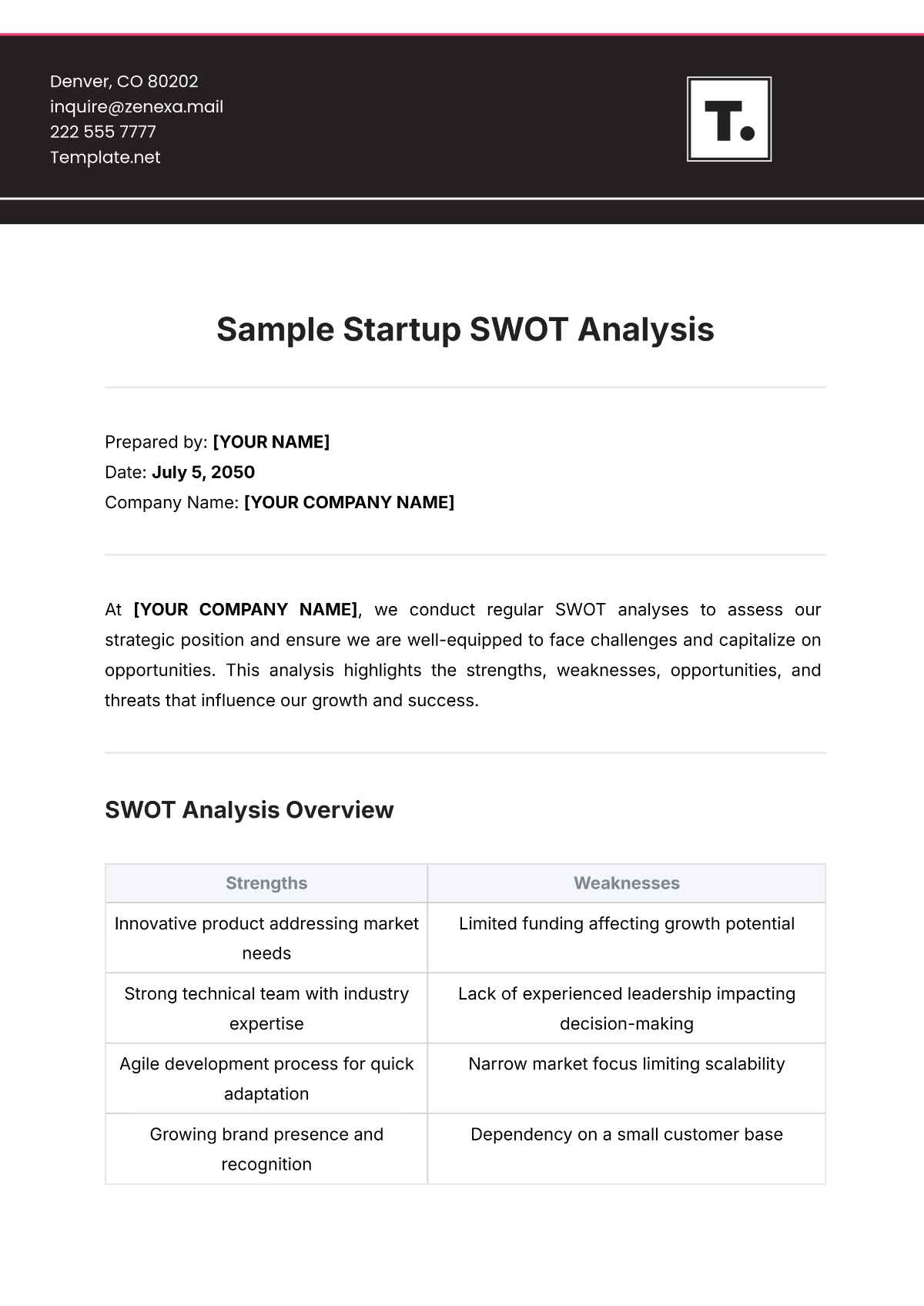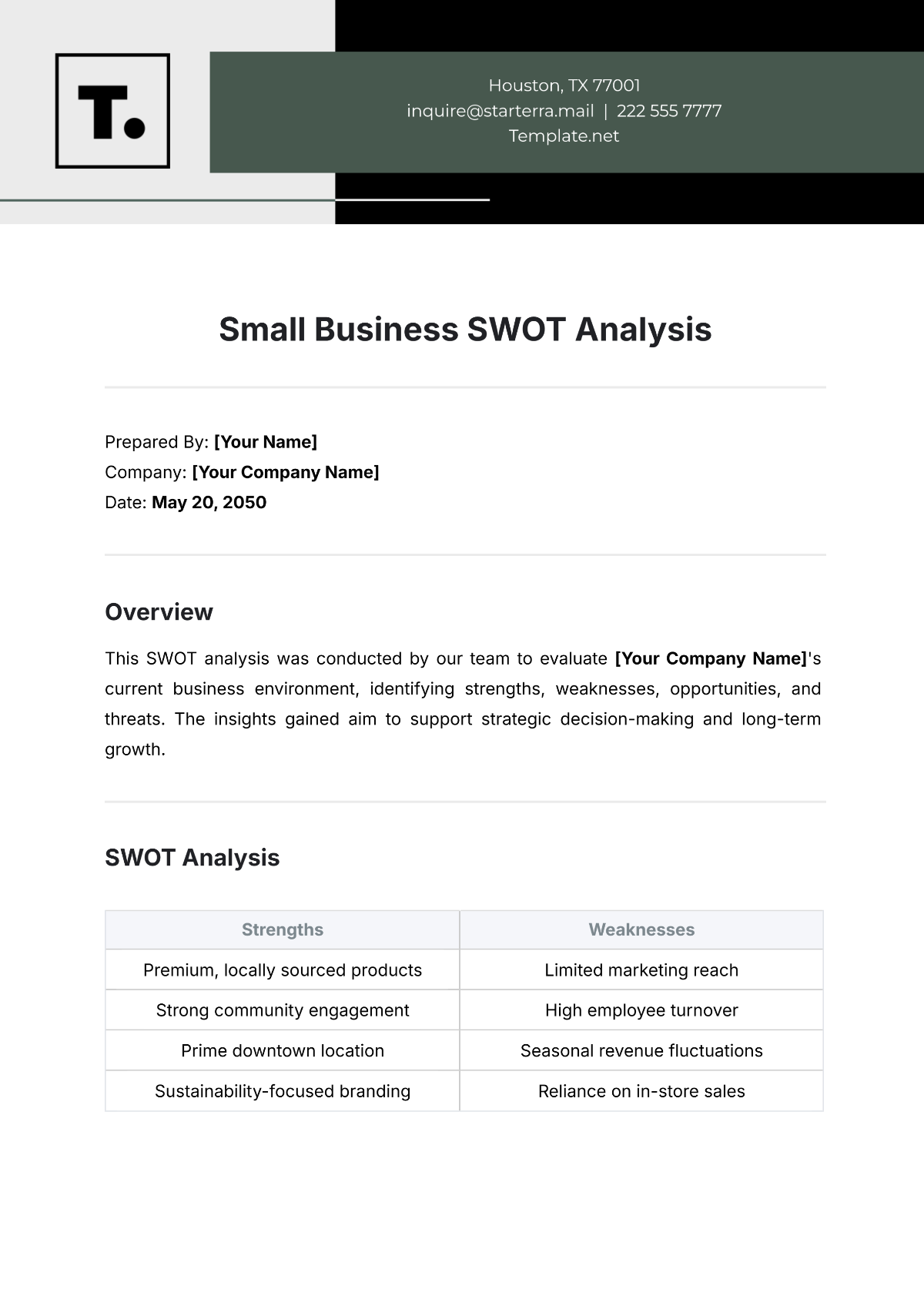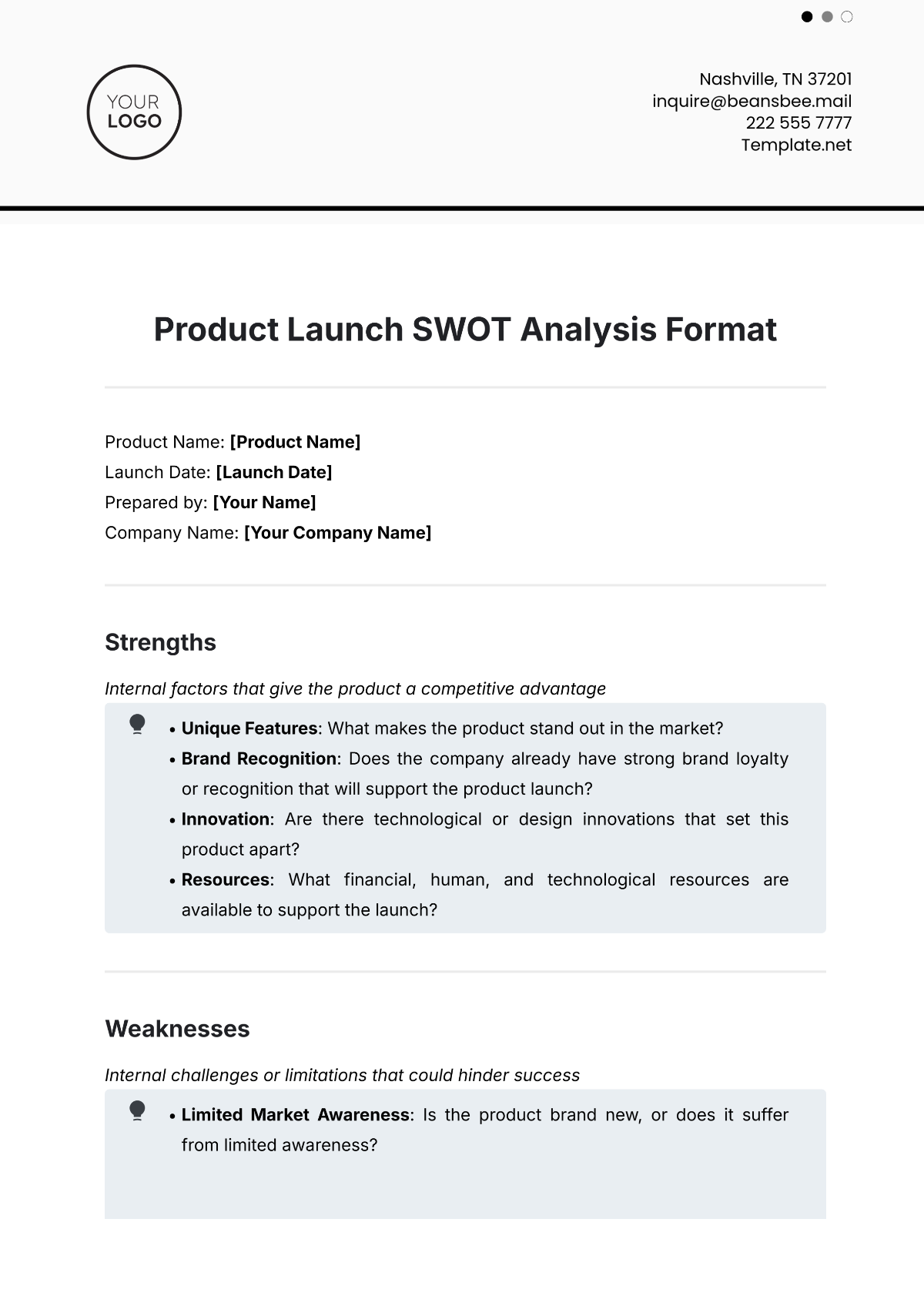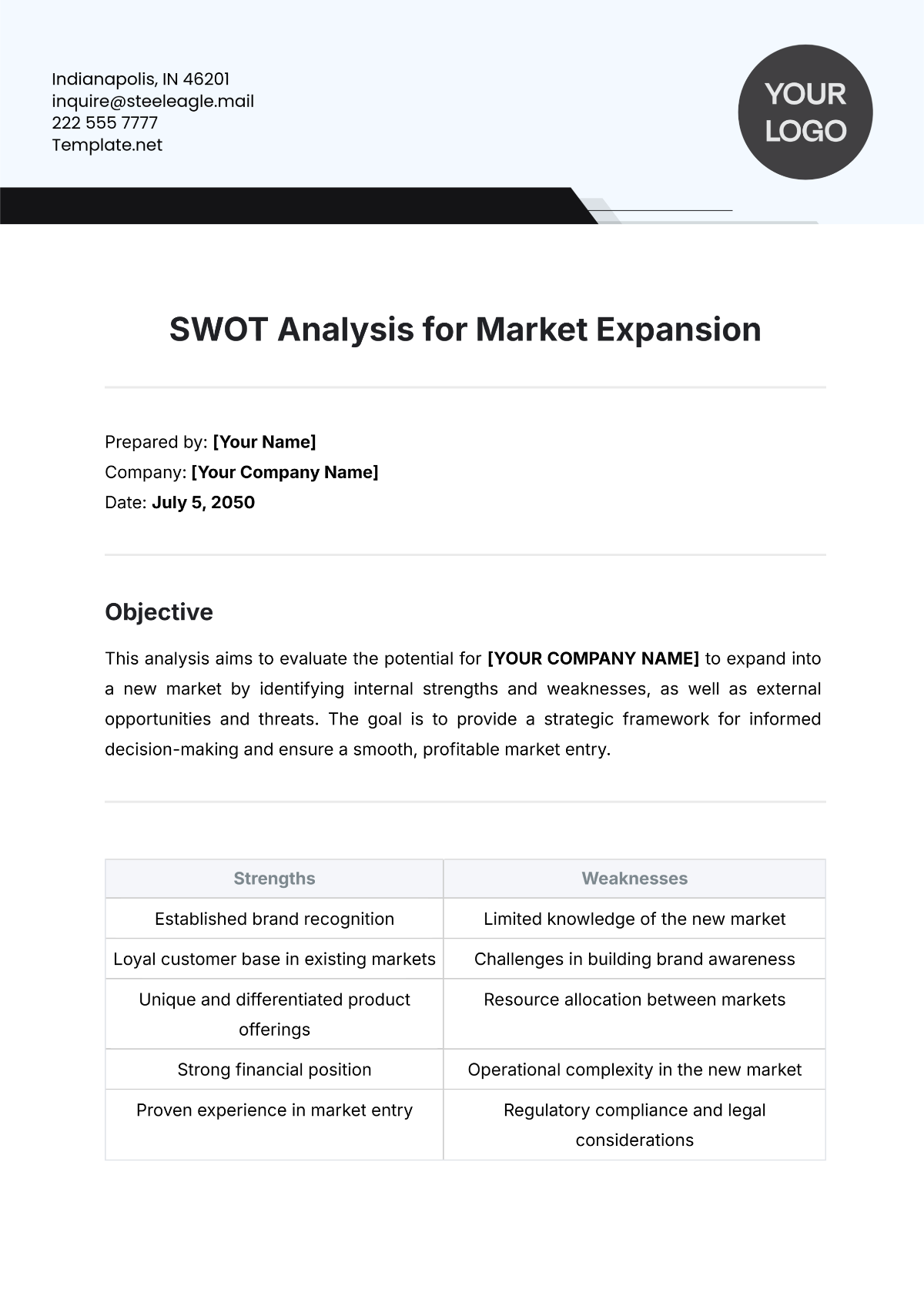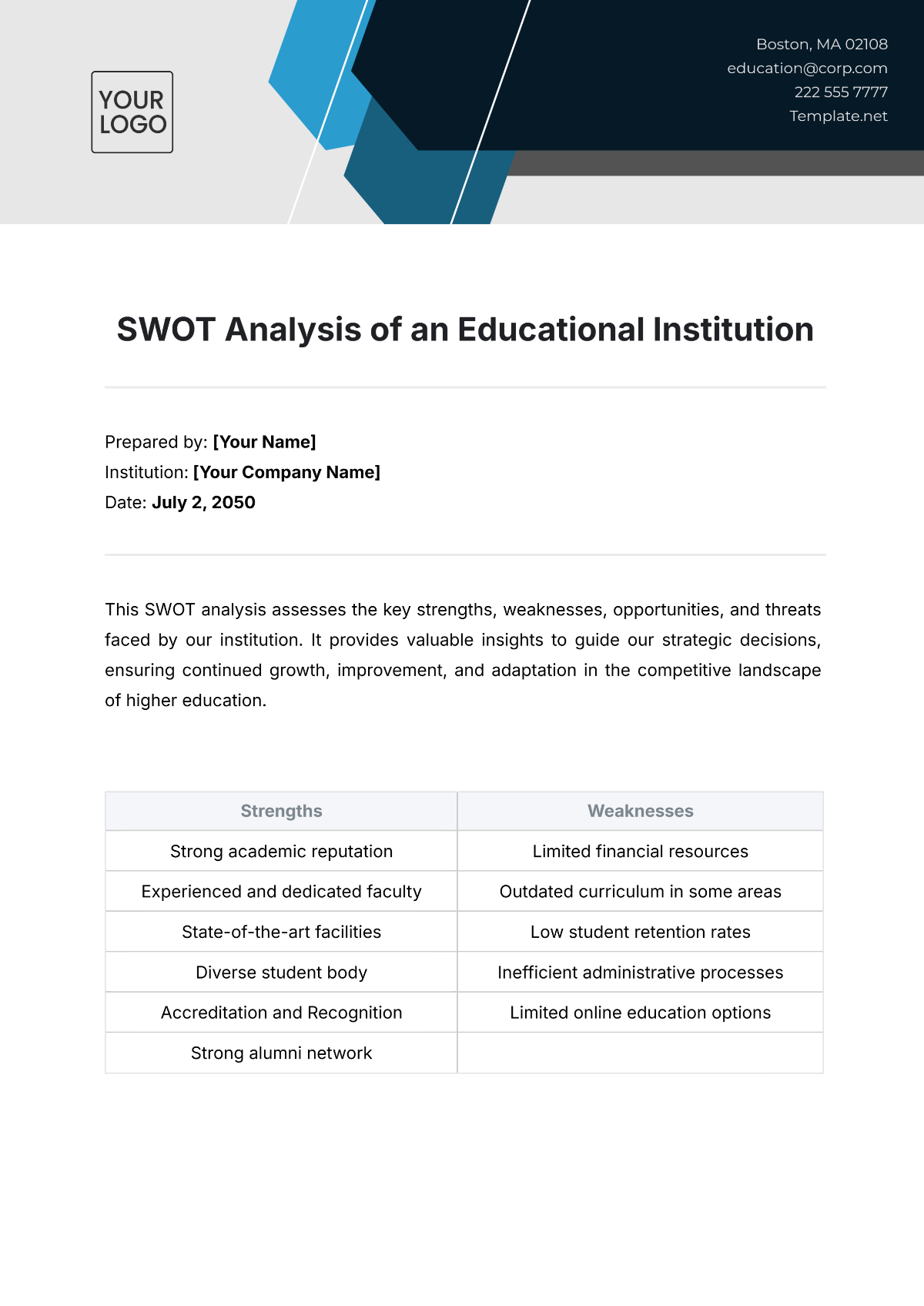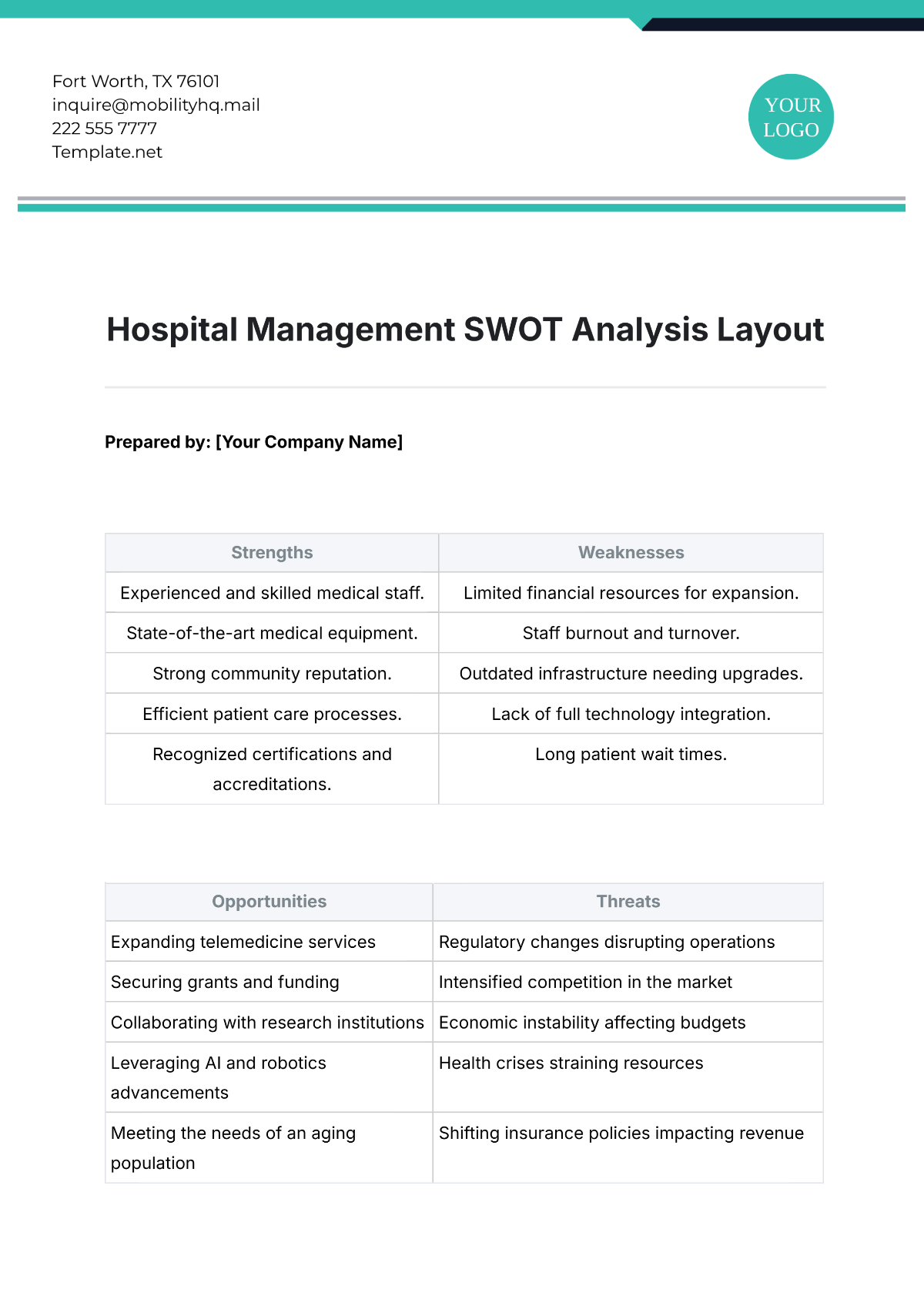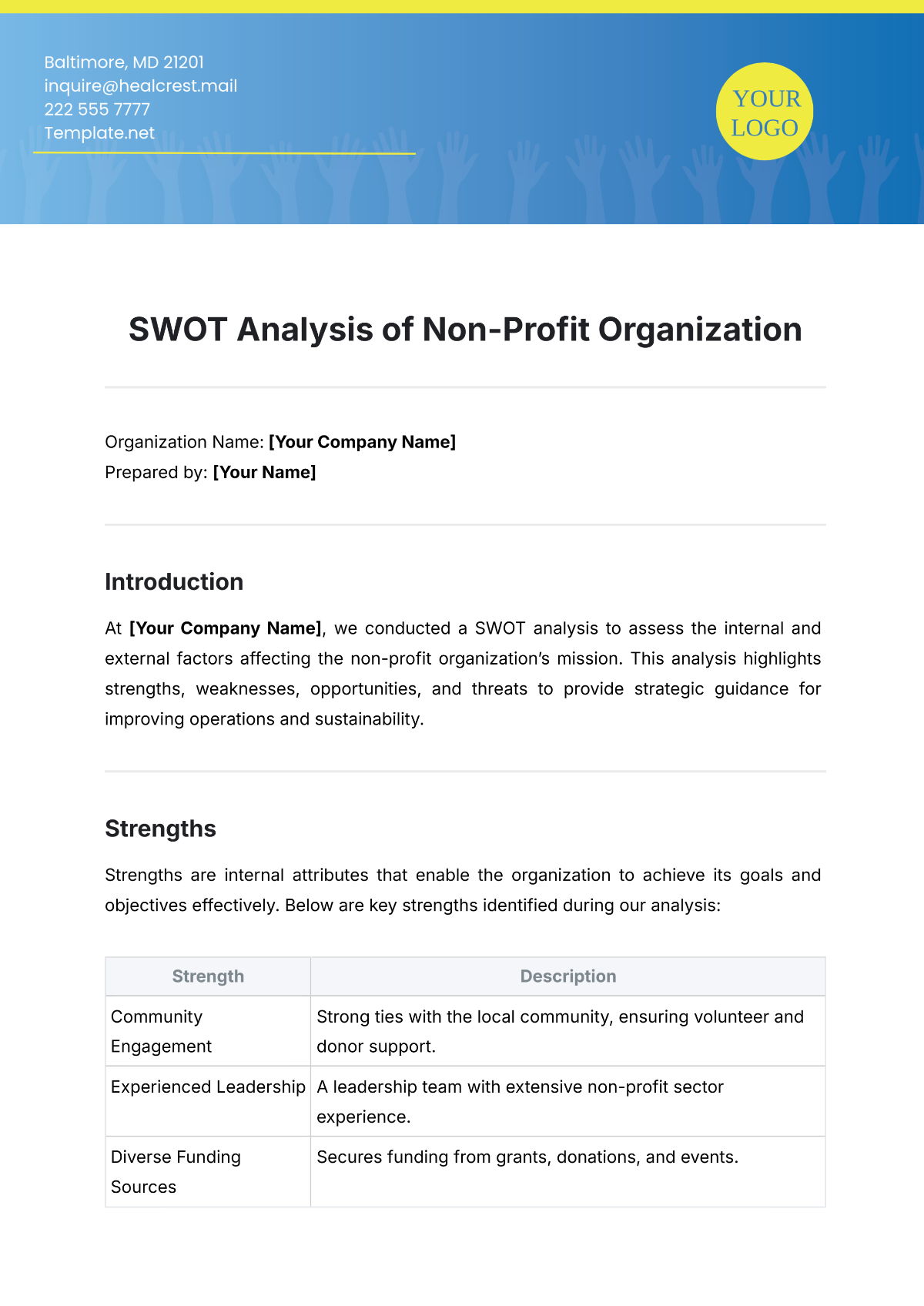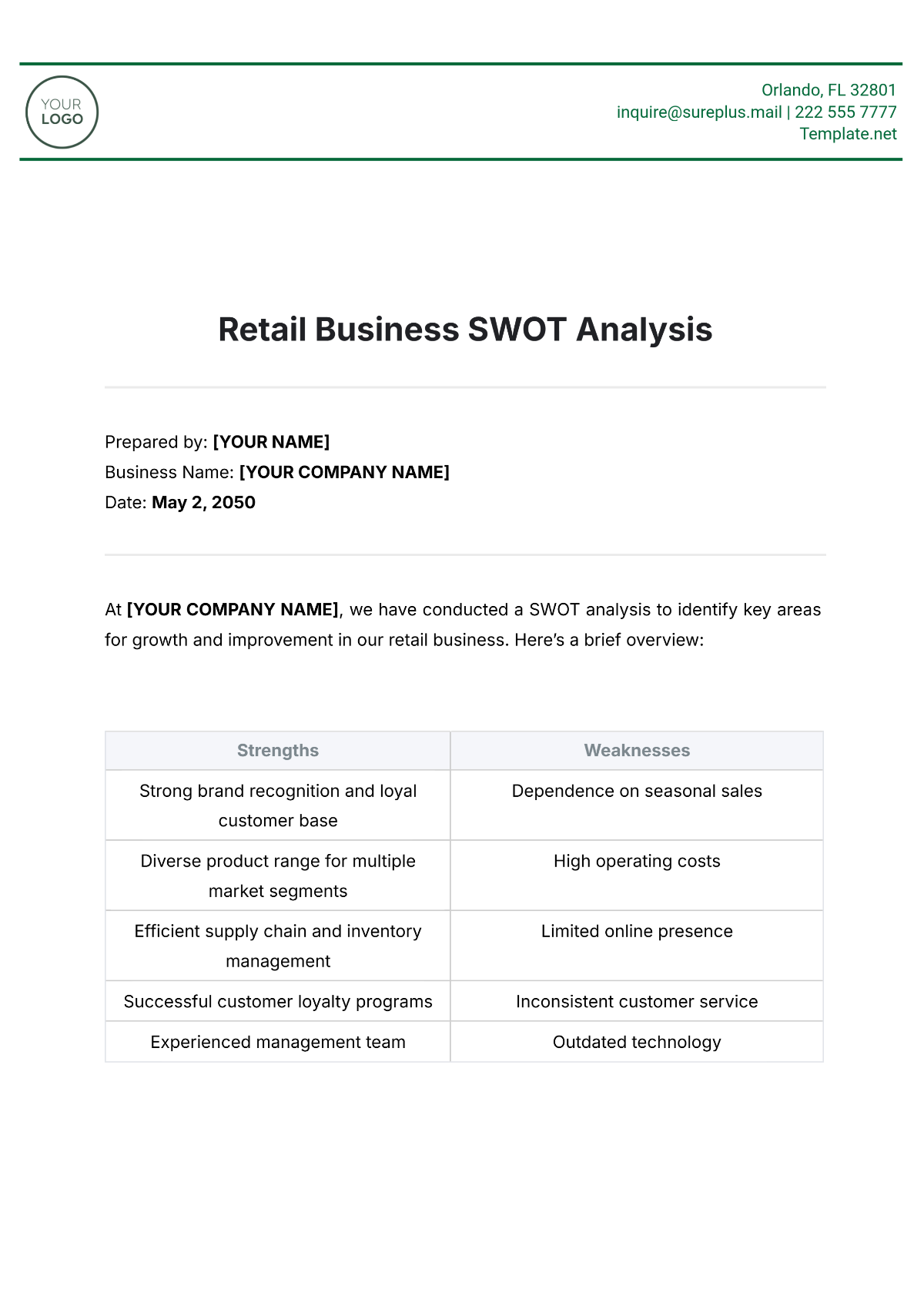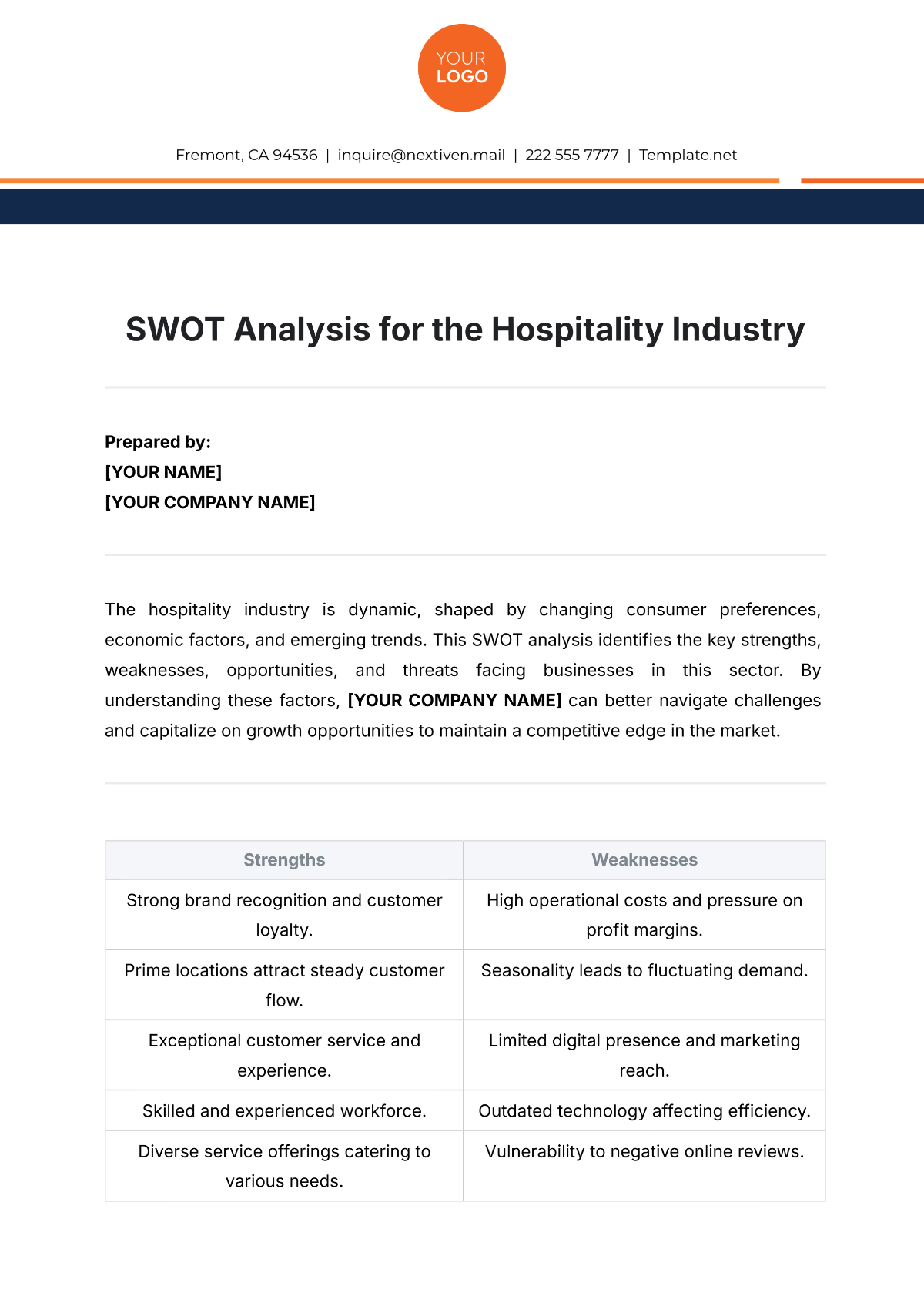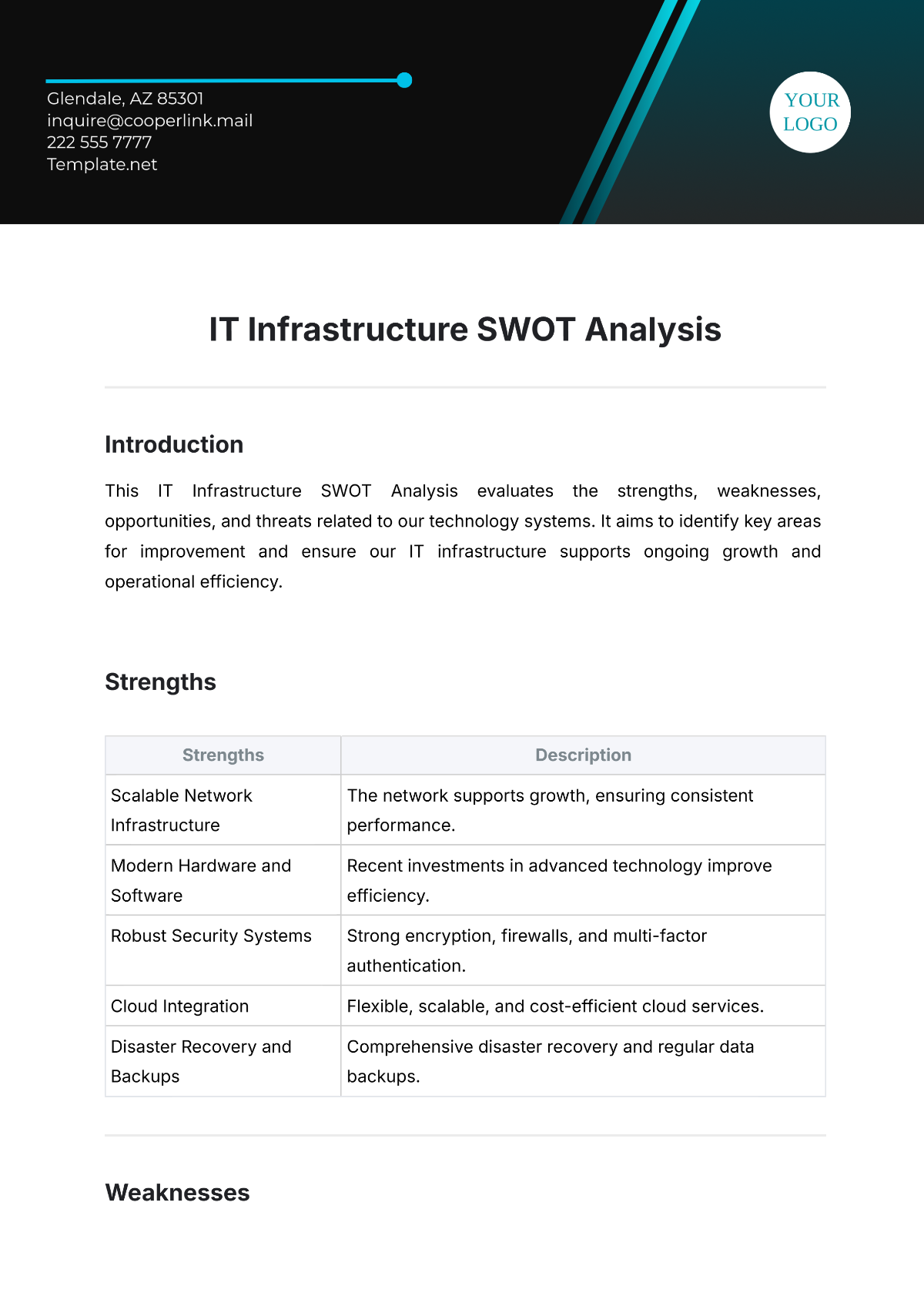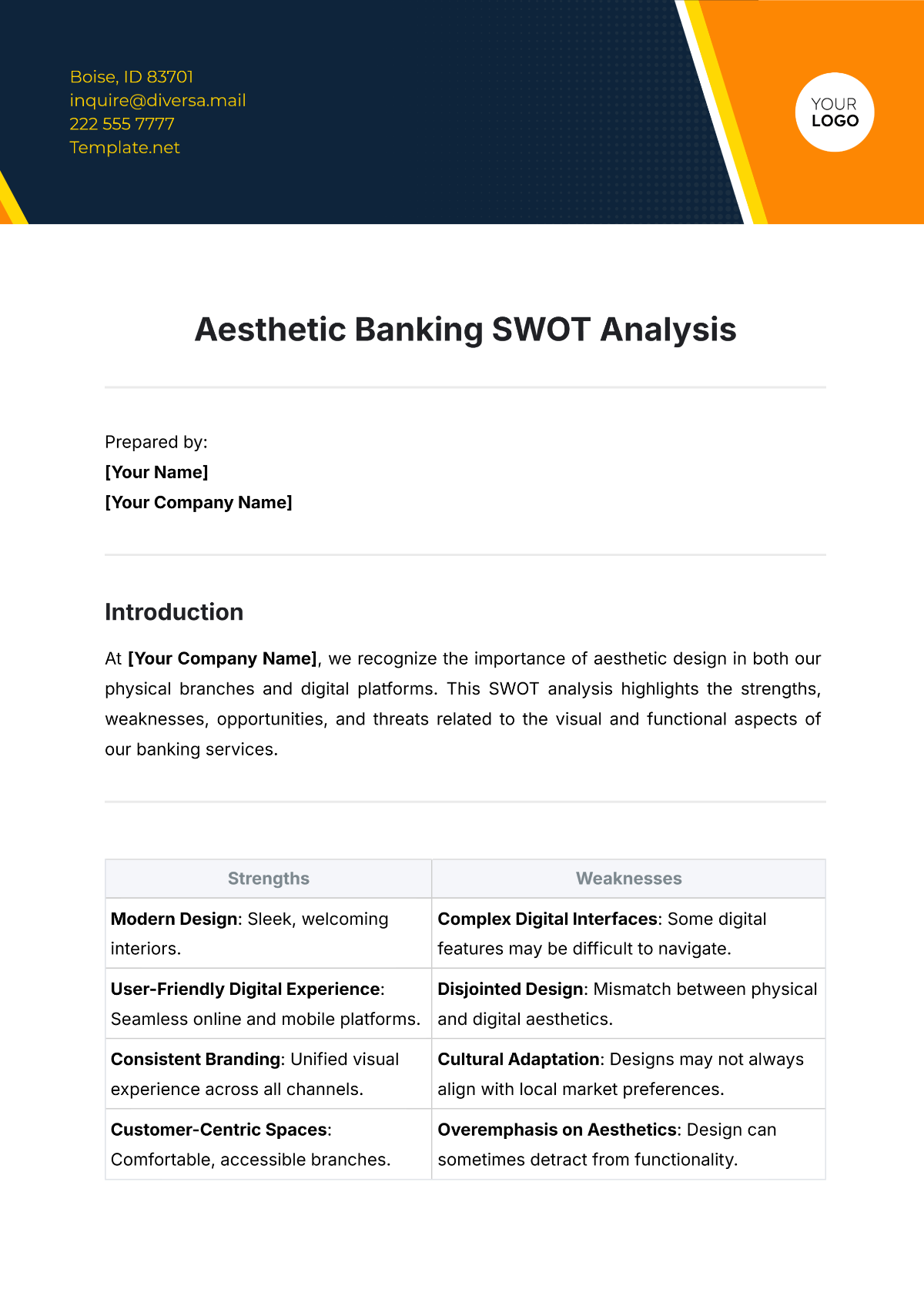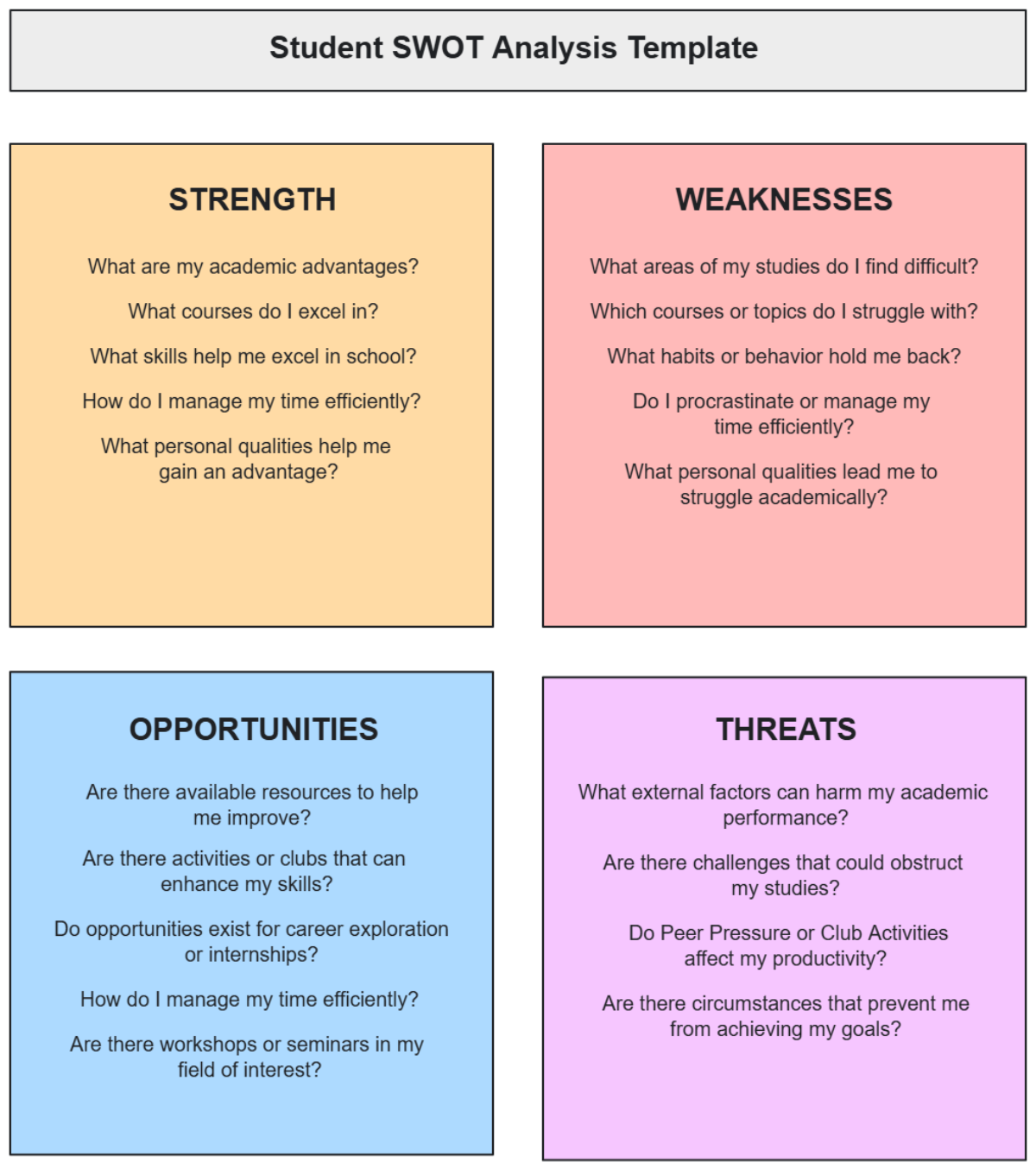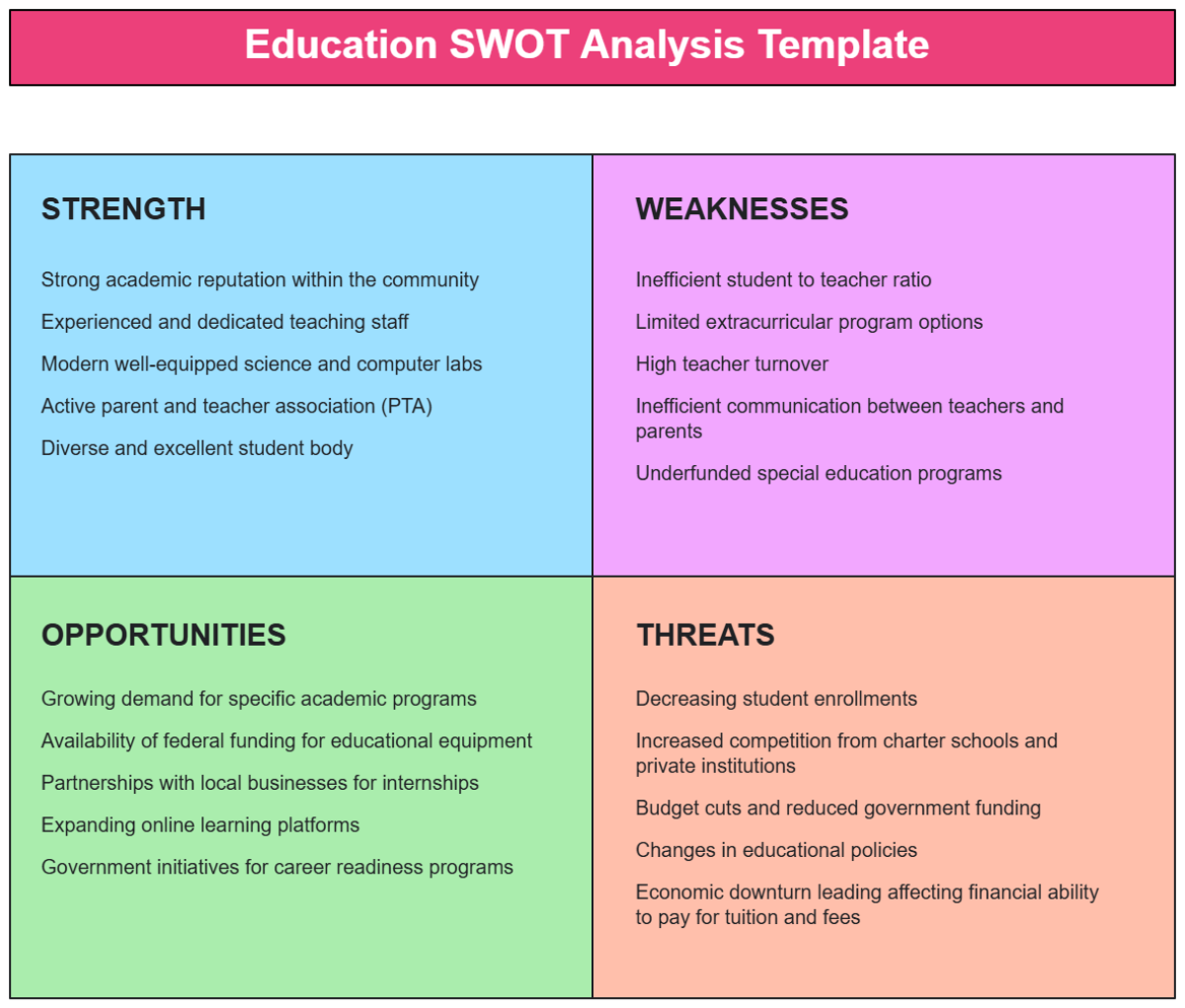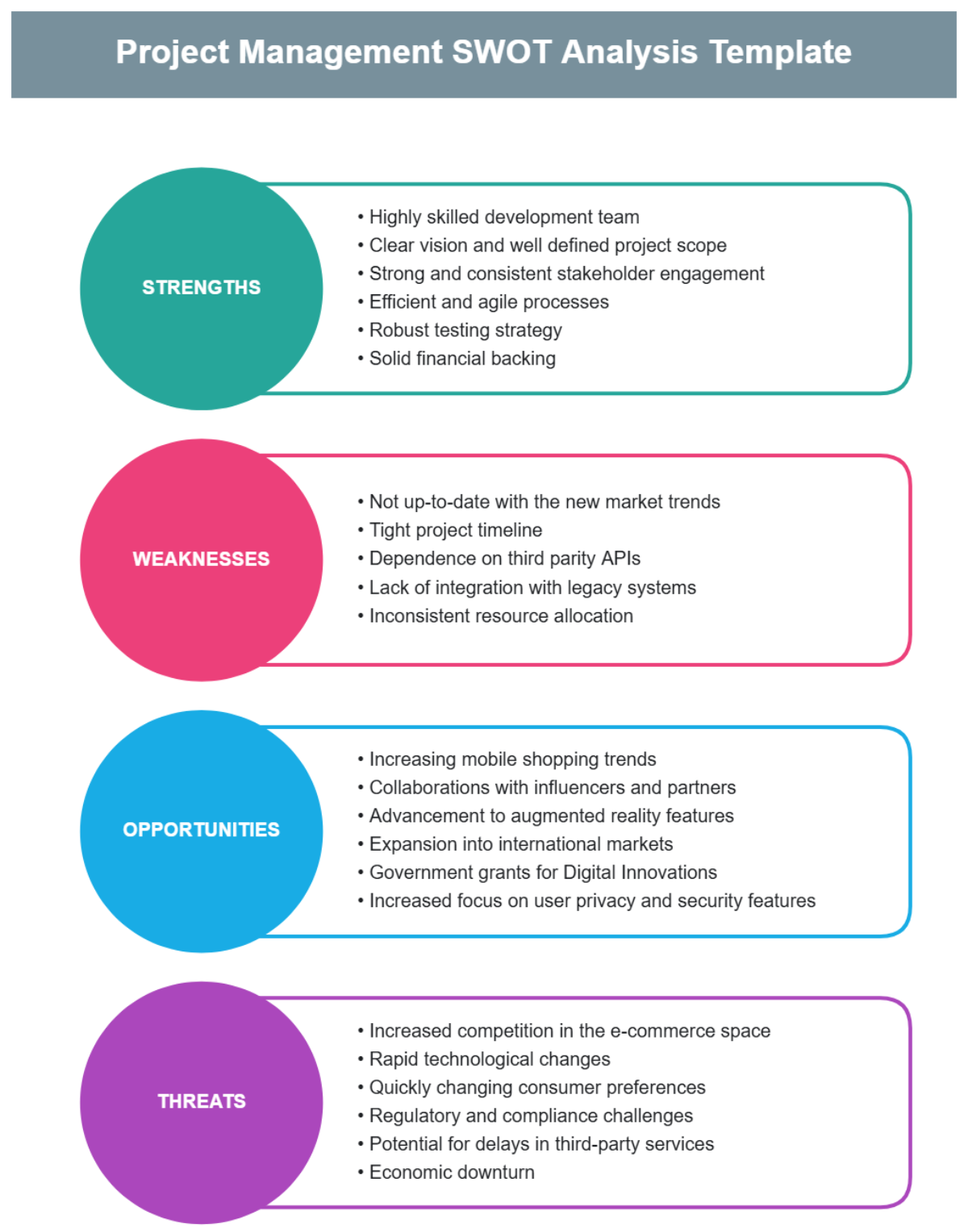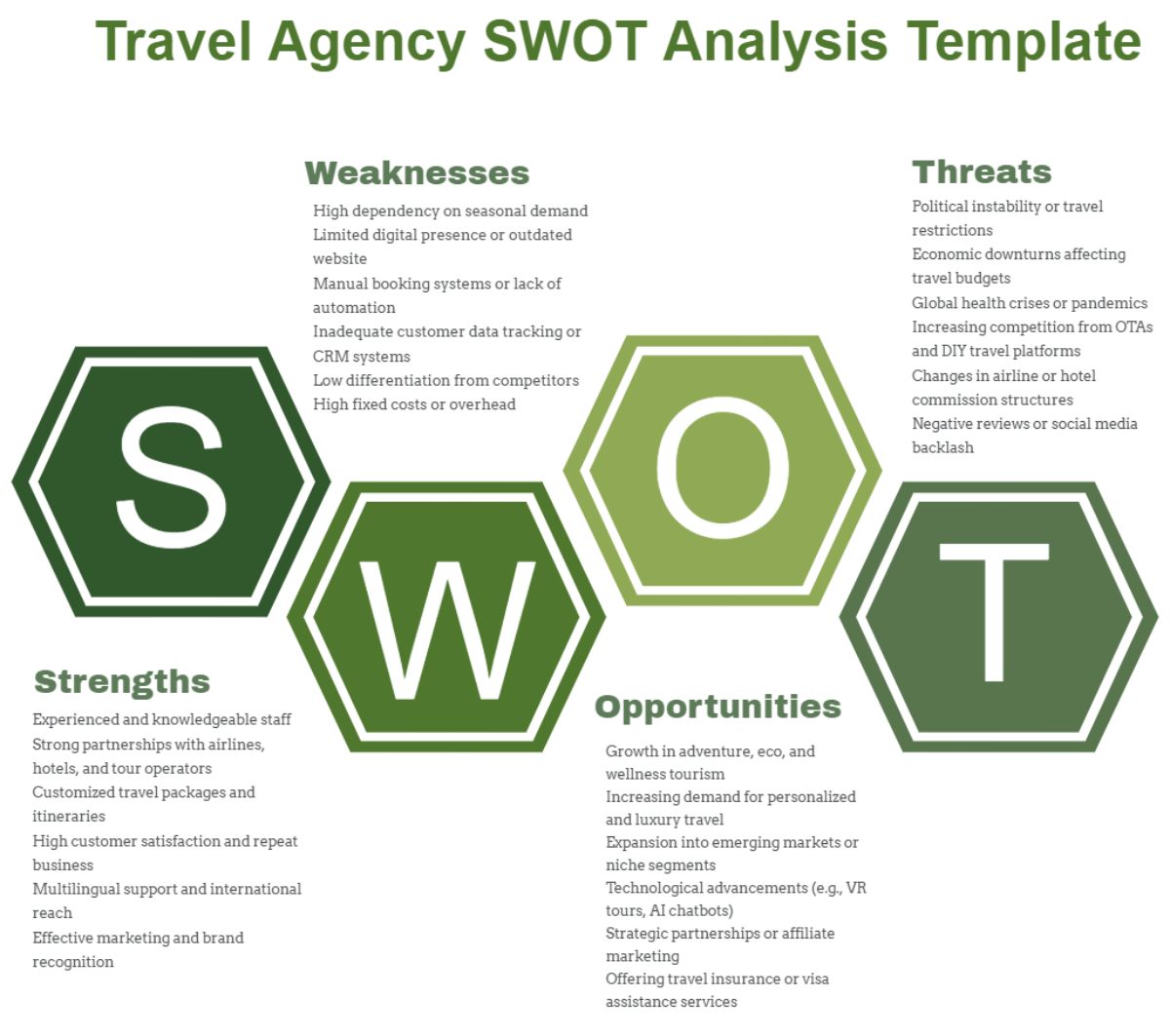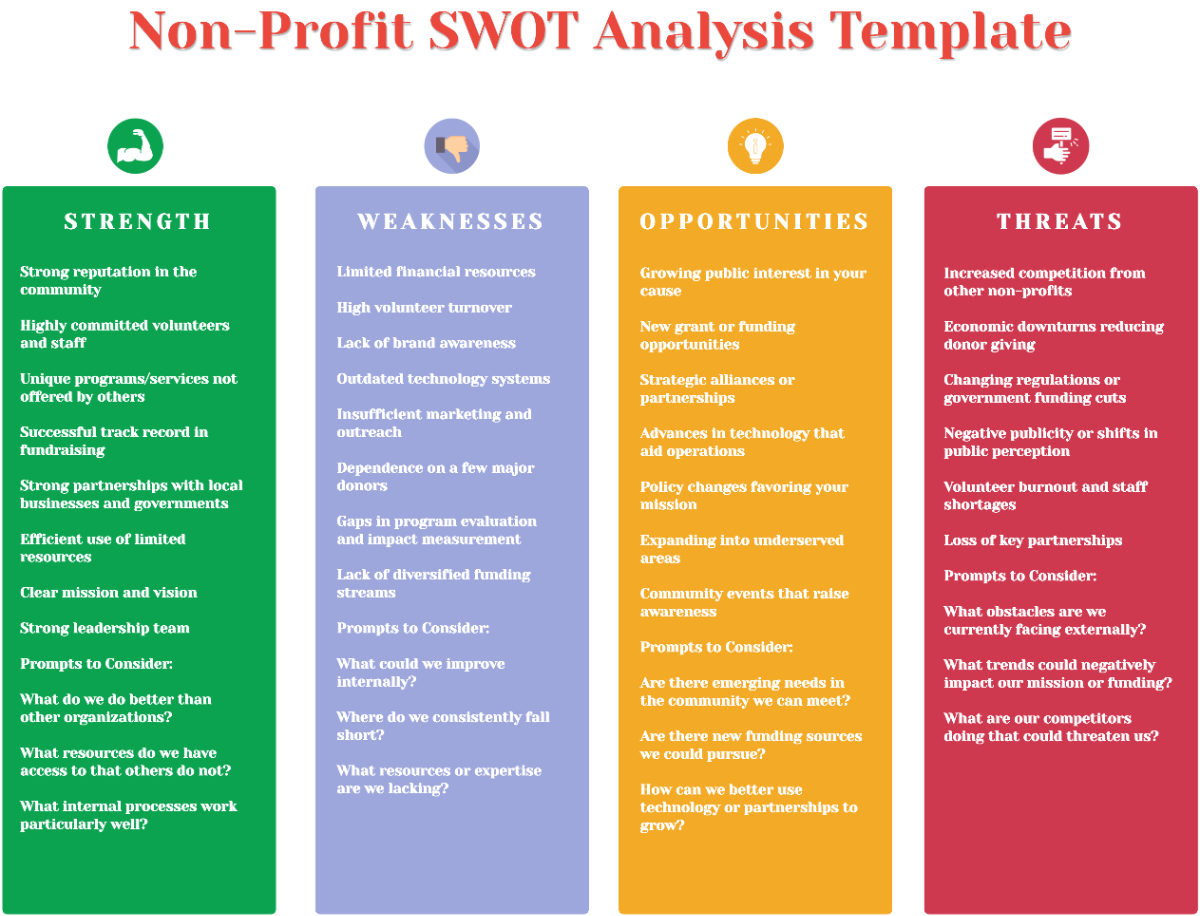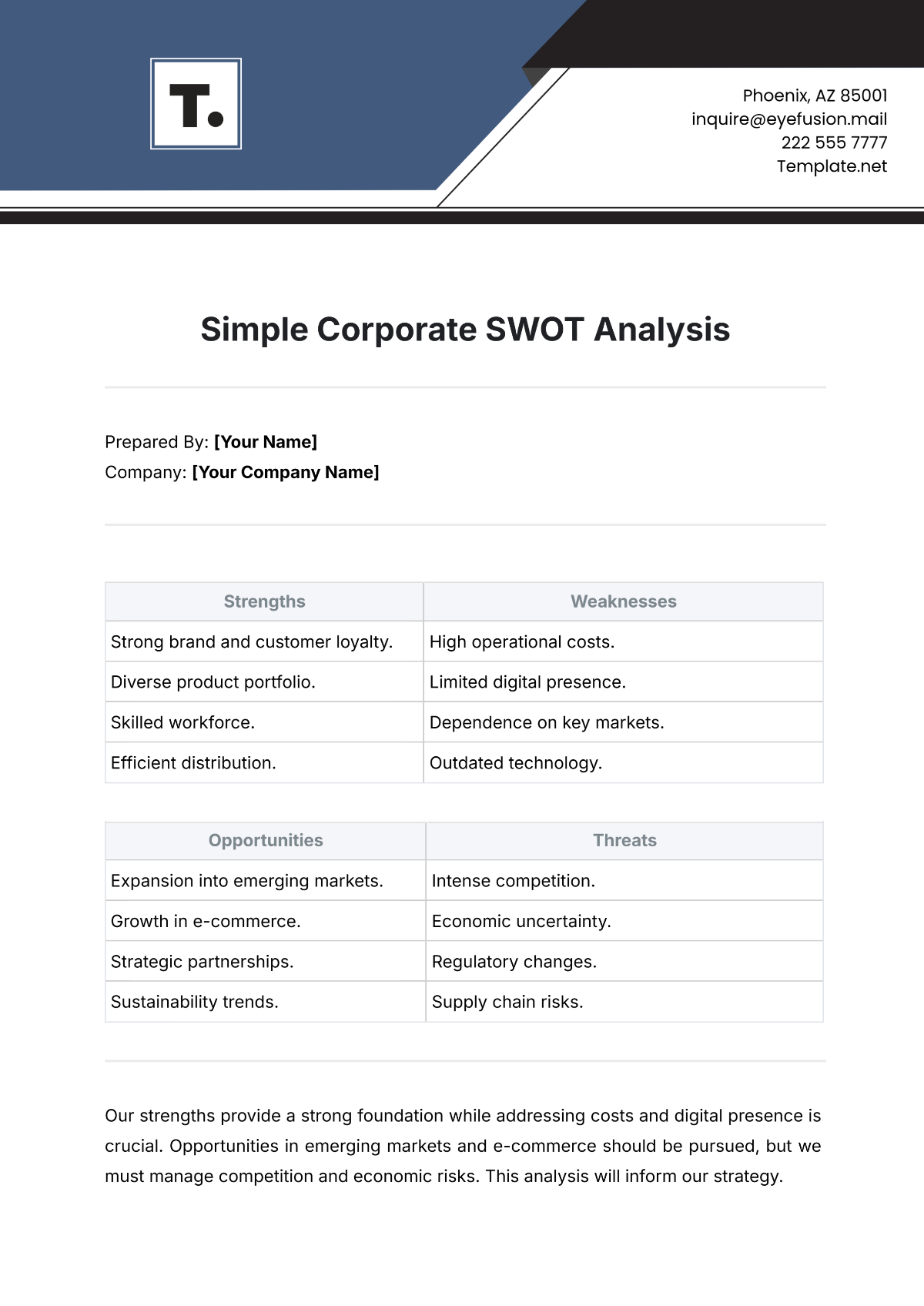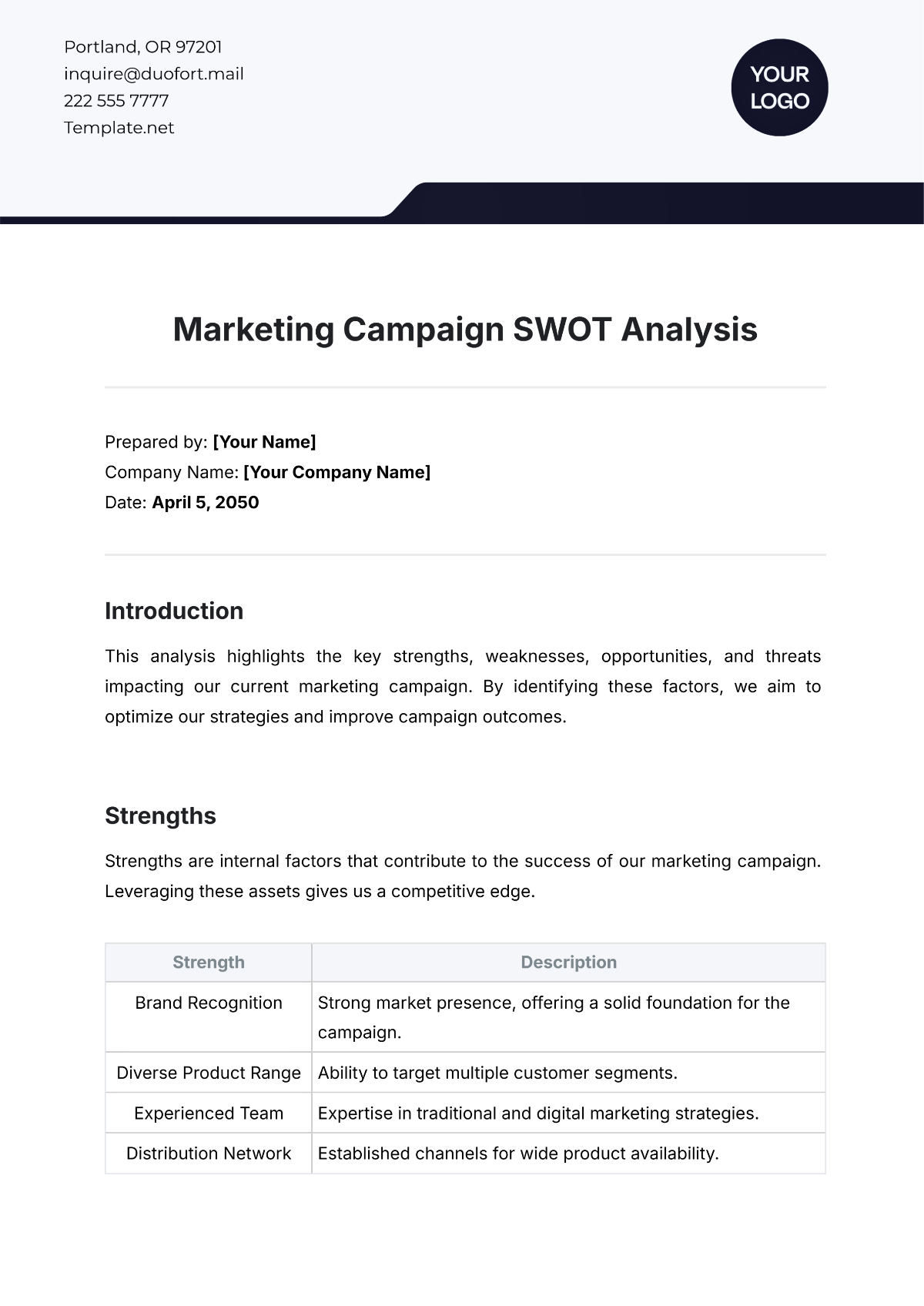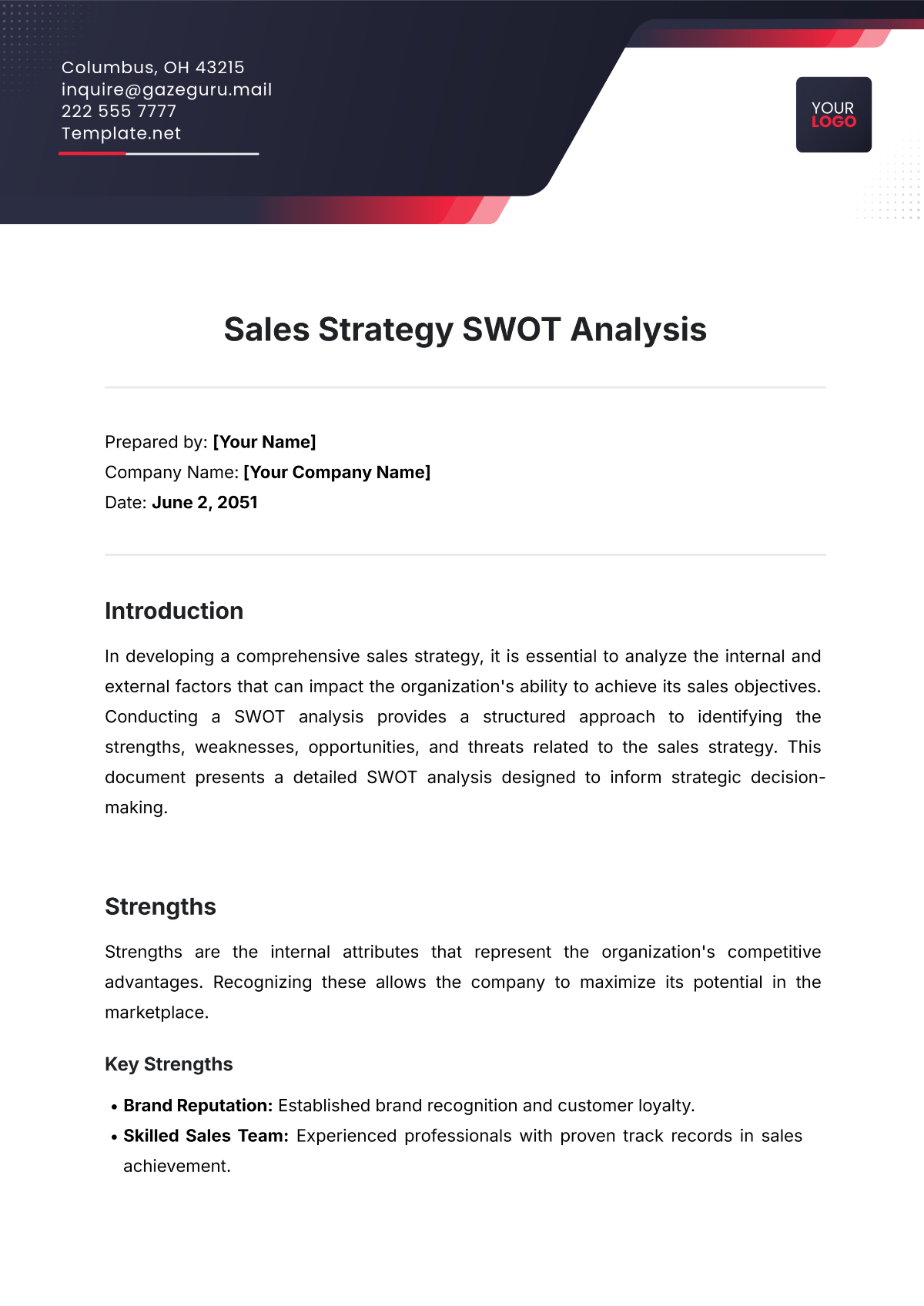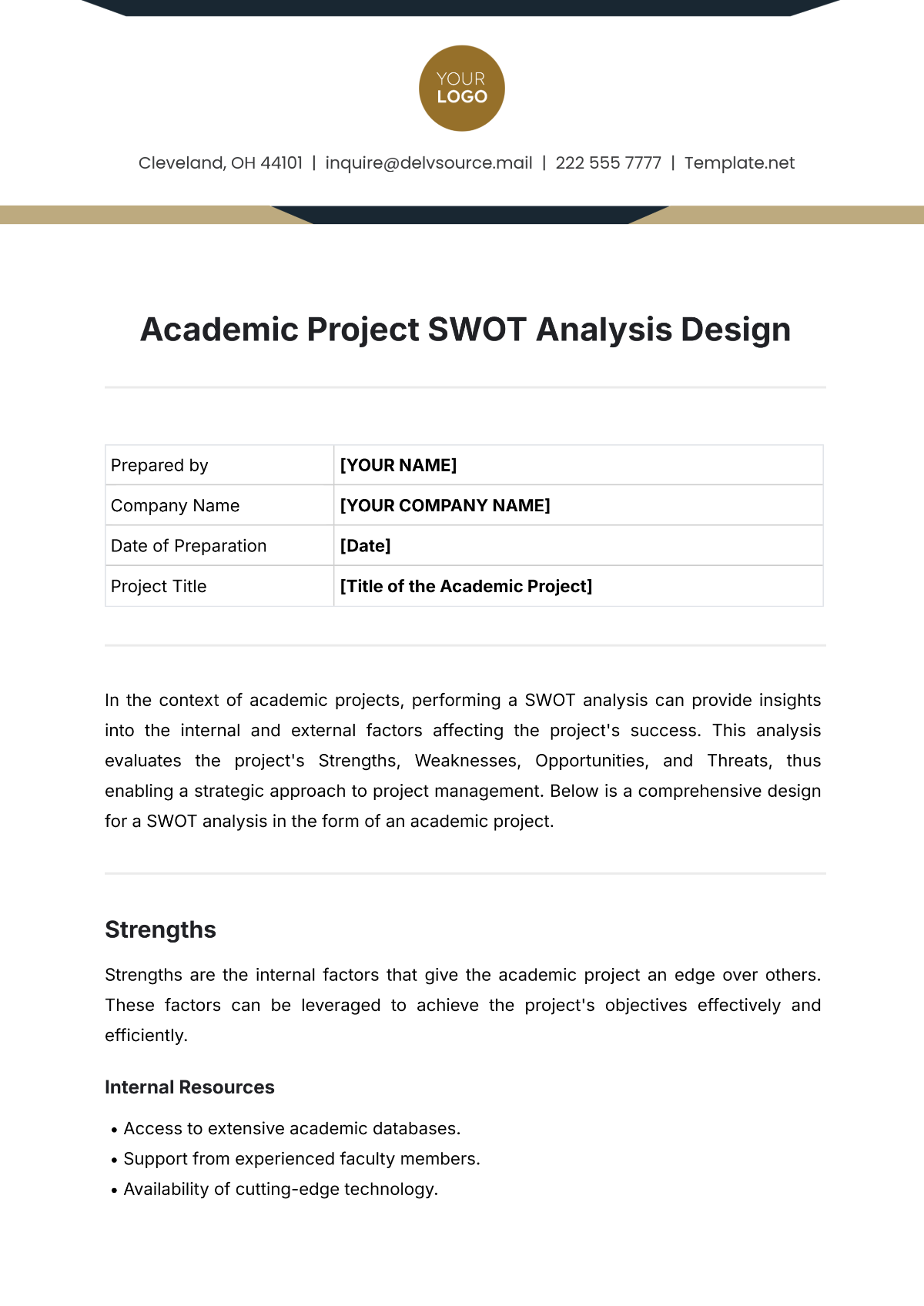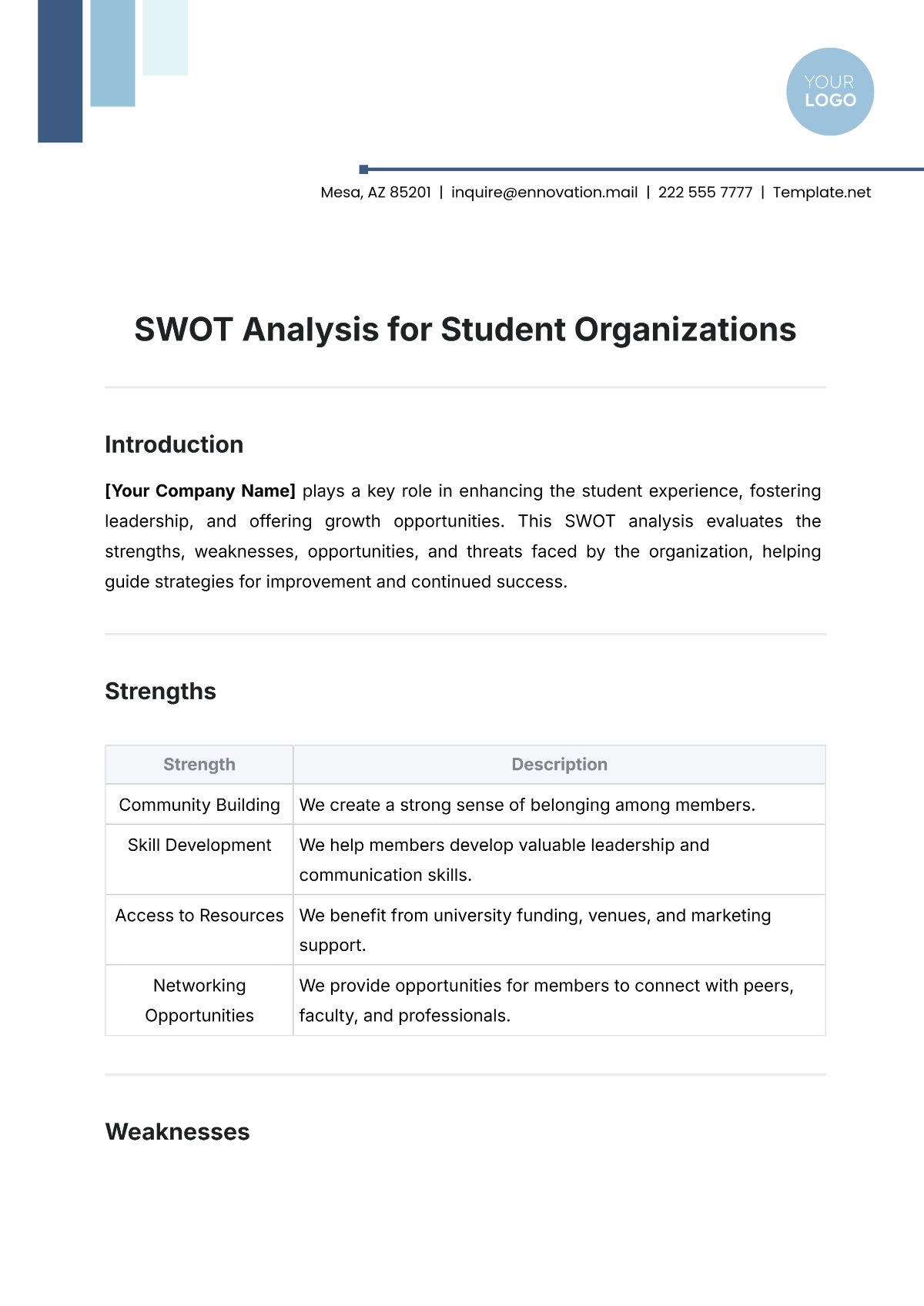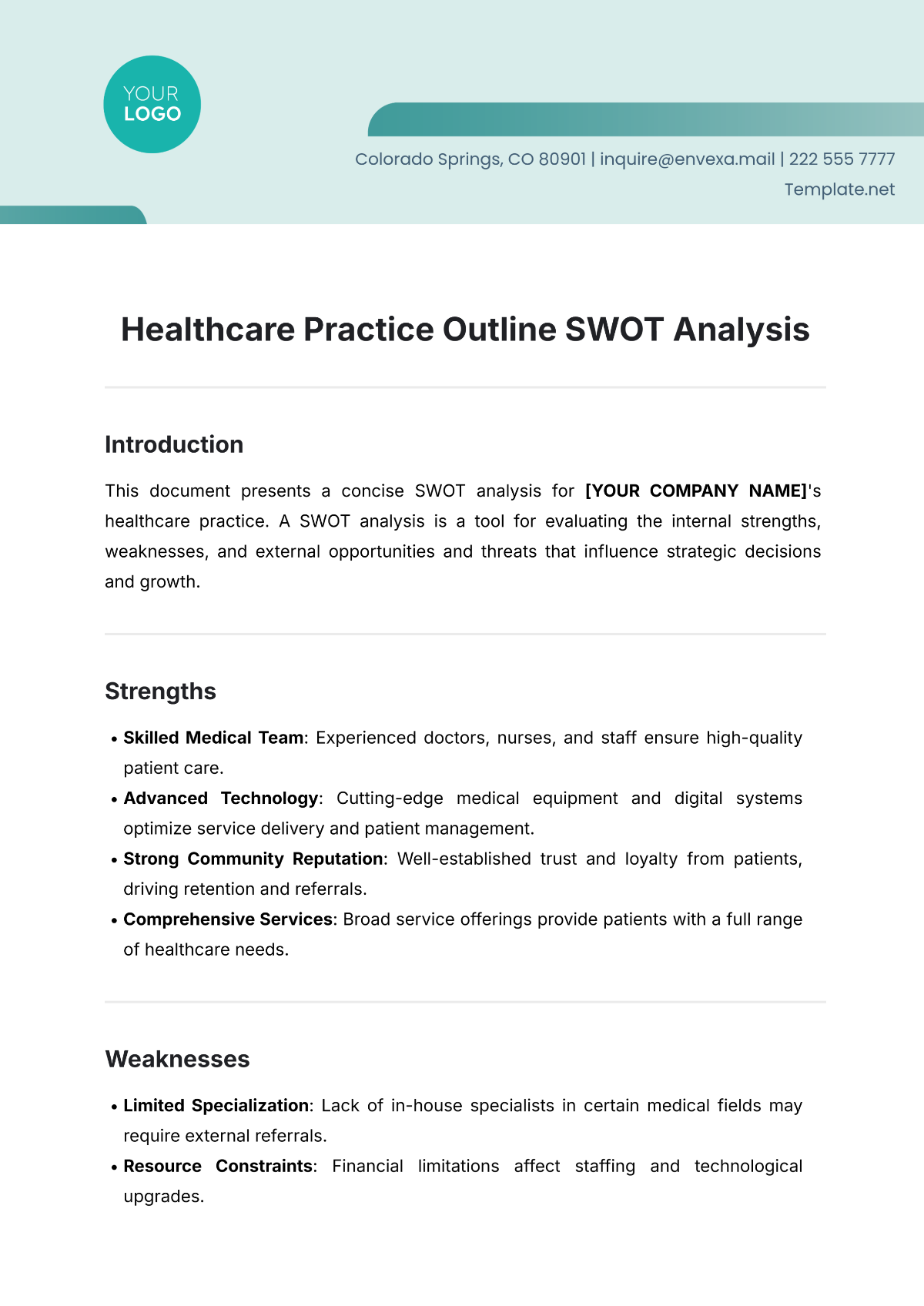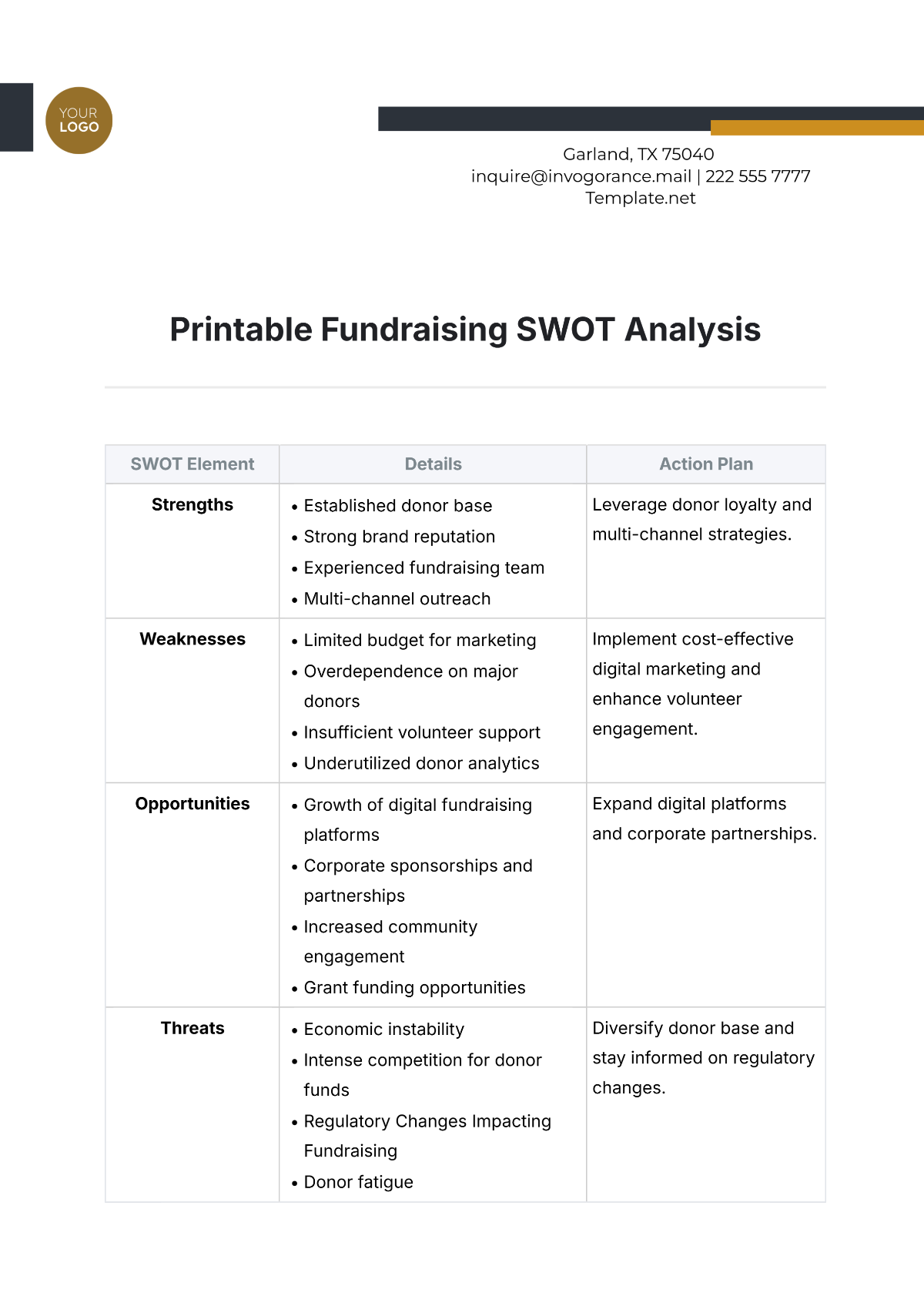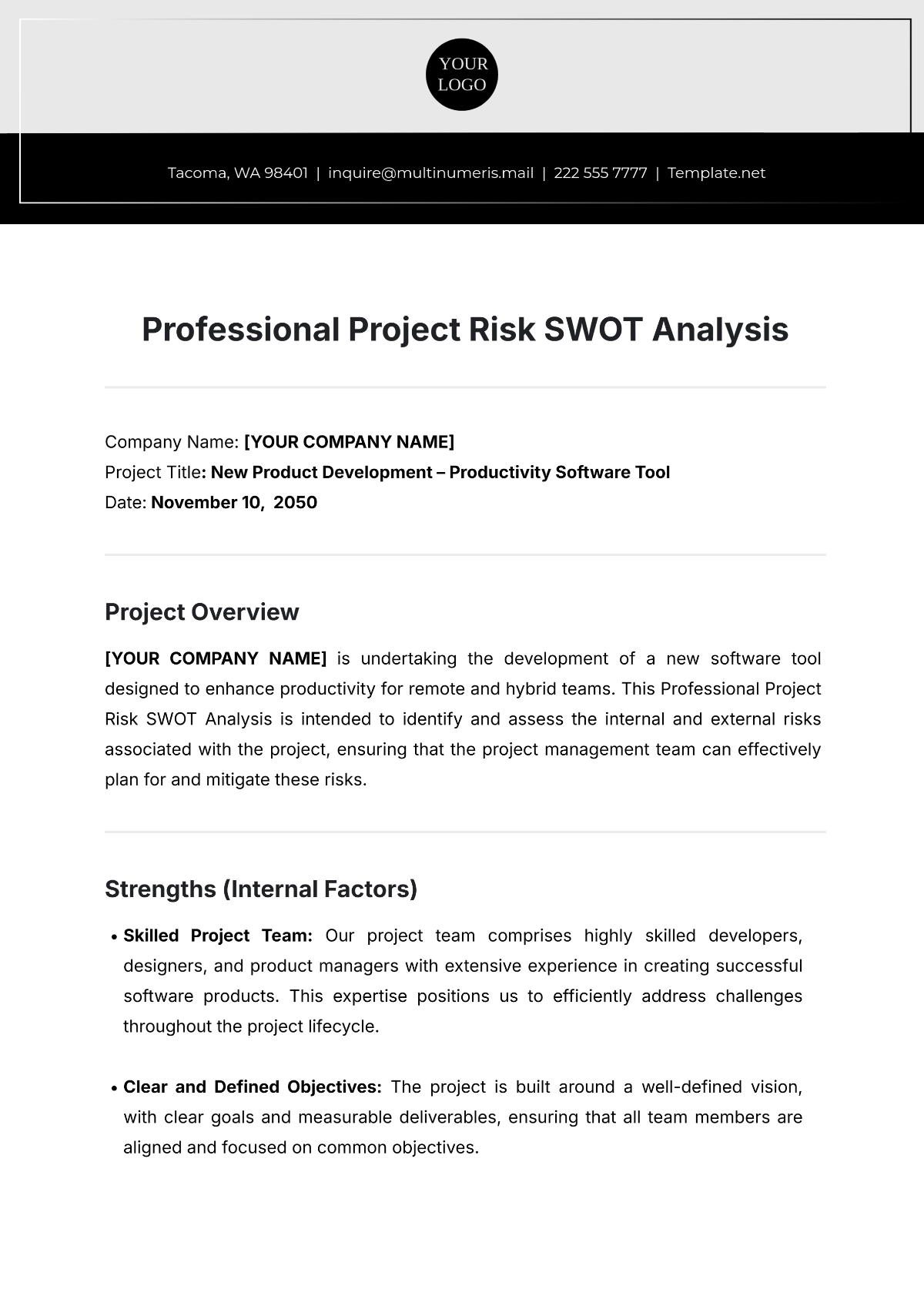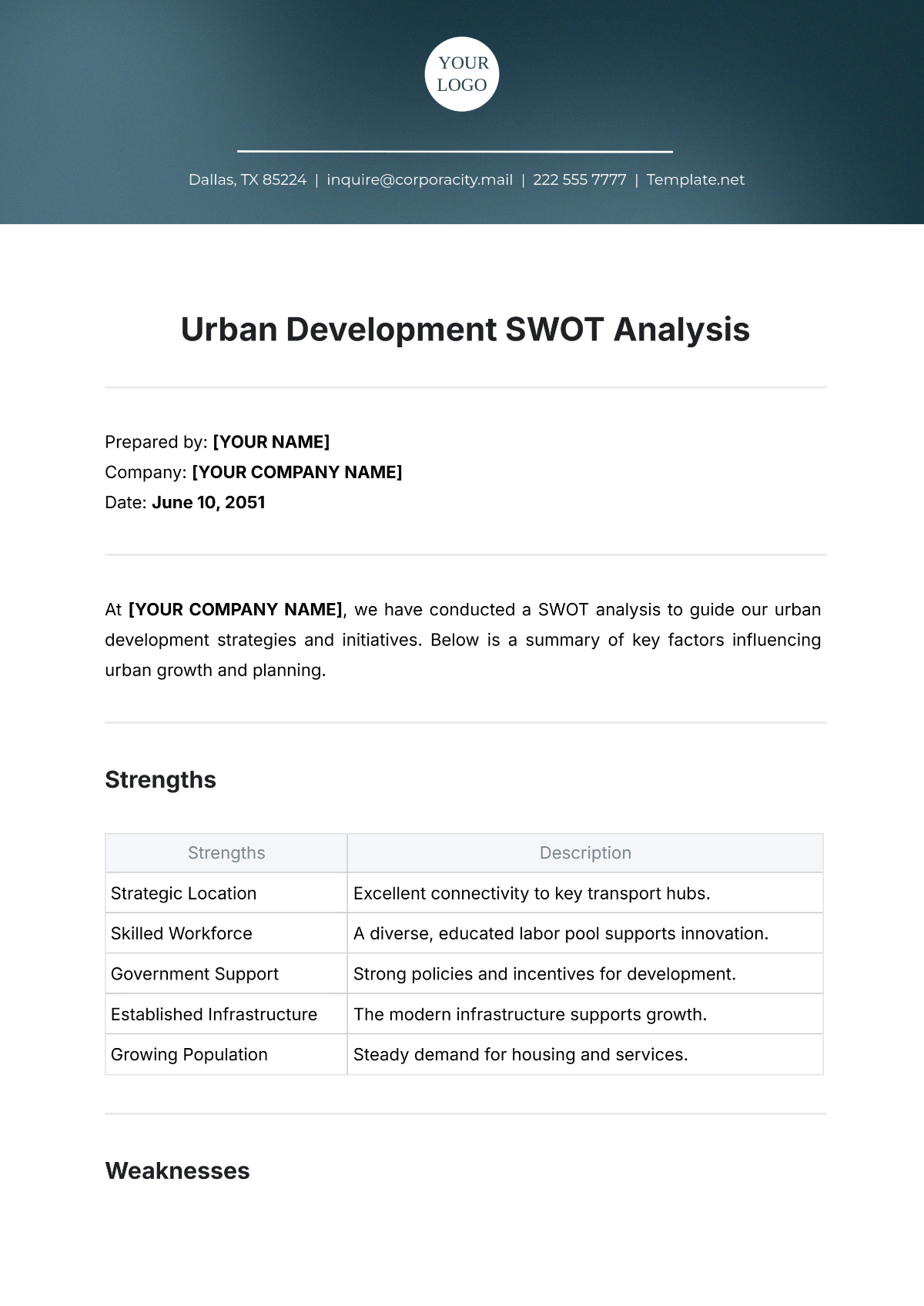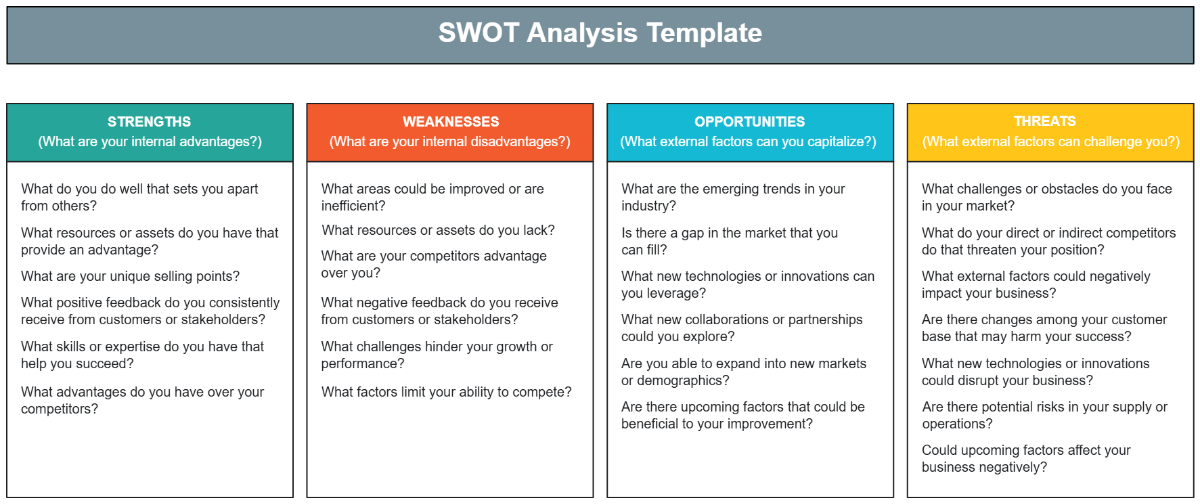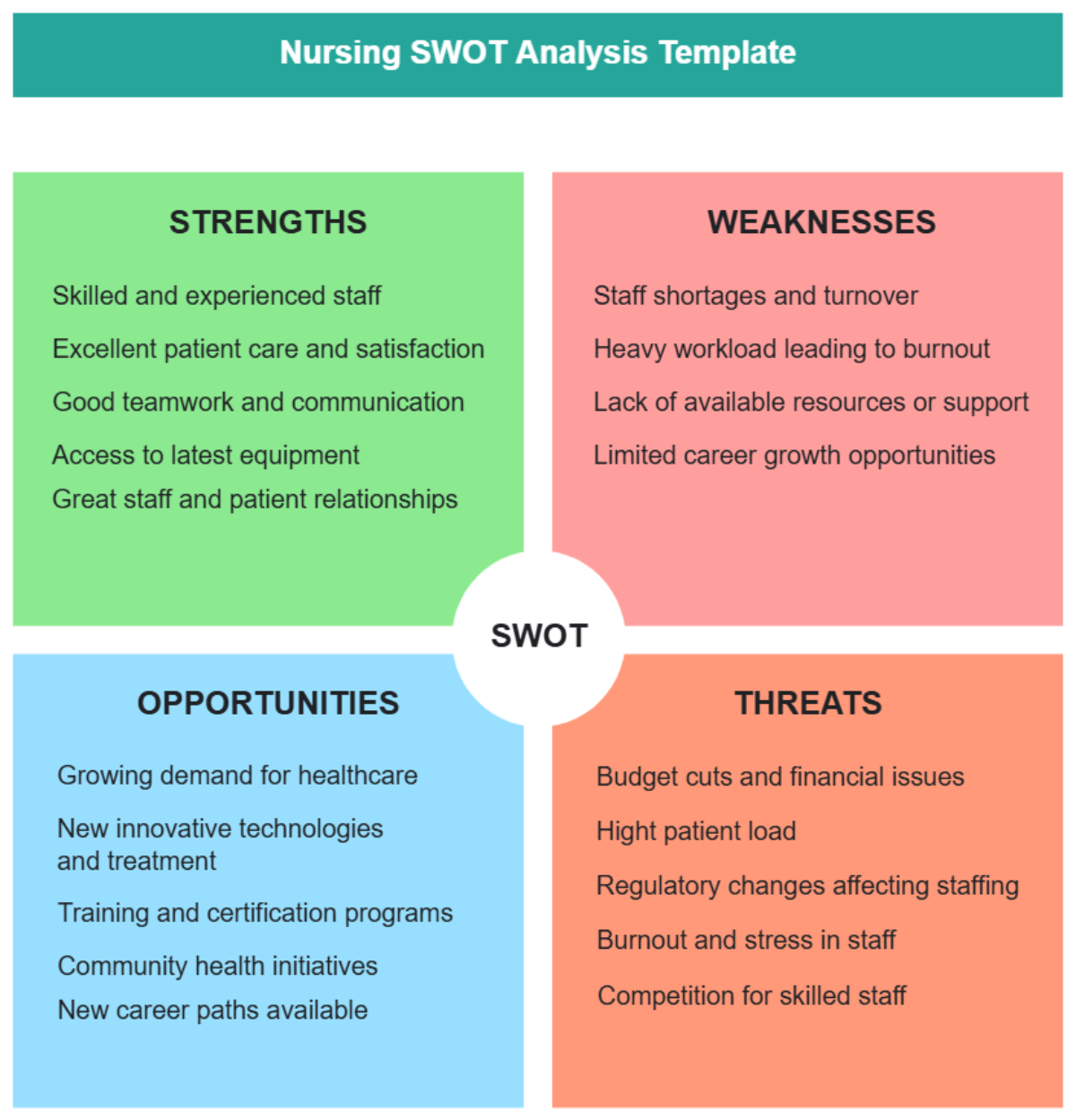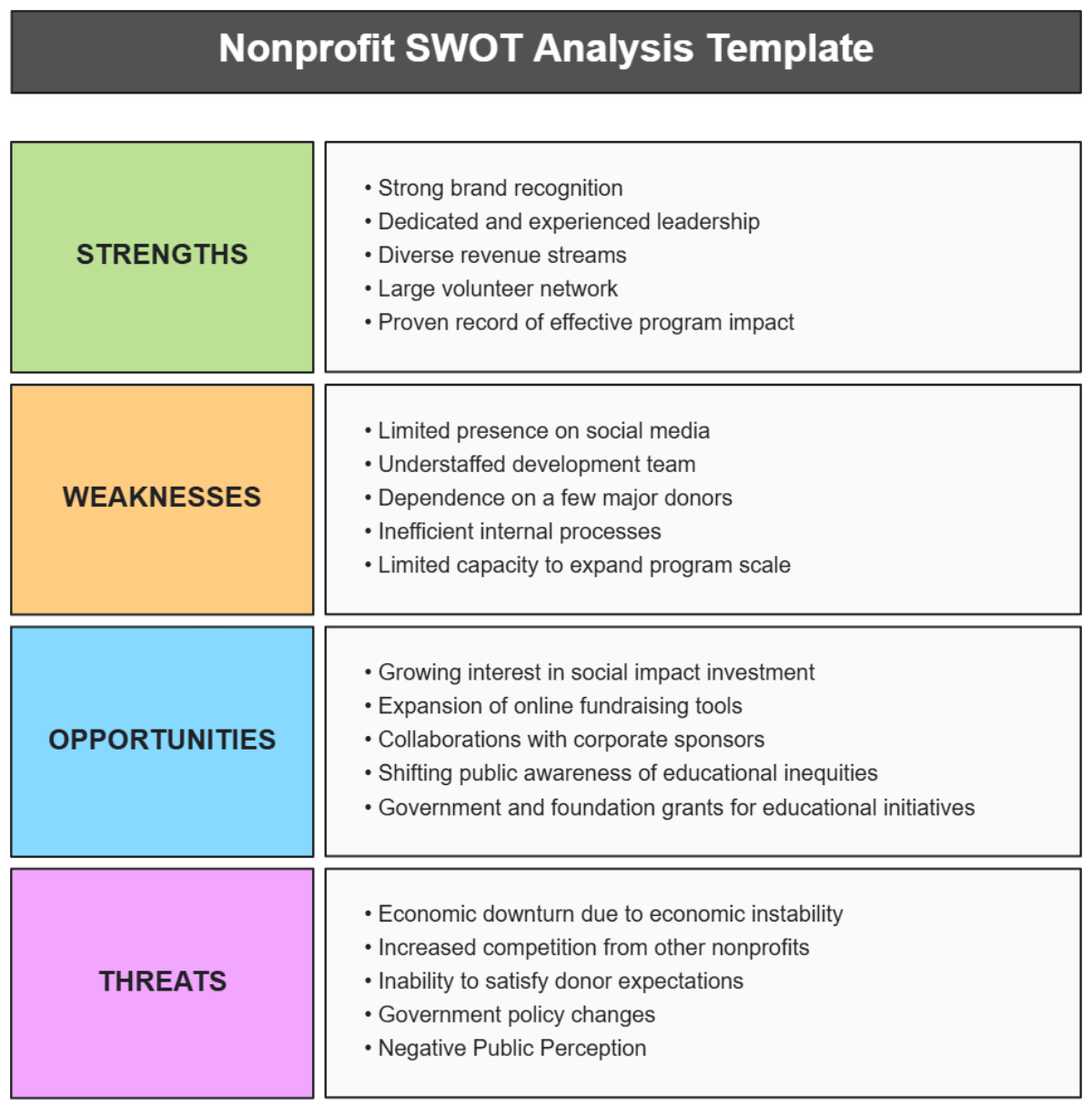New Employee SWOT Analysis Report
TABLE OF CONTENTS
Introduction ....................................................................................................................3
Global Workforce Trends ...............................................................................................3
The Evolving Role of Human Resources ......................................................................3
Strengths ........................................................................................................................4
Weaknesses ...................................................................................................................5
Opportunities .................................................................................................................6
Threats ...........................................................................................................................7
Recommendations ........................................................................................................8
Performance Metrics and Evaluation ...........................................................................9
Conclusion ....................................................................................................................10
Introduction
As companies strive for agility and innovation, each new team member presents both unique opportunities and challenges. This report aims to provide a detailed SWOT analysis of the impact of onboarding a new employee at [Your Company Name], considering the broader shifts in the global workforce and emerging market dynamics.
Global Workforce Trends
Remote and Hybrid Work: The ability of employees to work remotely or in hybrid environments has become standard, allowing companies to tap into global talent pools.
Lifelong Learning: With technology and business practices evolving at an unprecedented rate, employees now have a continuous learning mindset, ensuring their skills remain relevant.
Diverse and Inclusive Workforces: Companies are recognizing the value of having diverse teams, leading to a more inclusive hiring approach that brings a myriad of perspectives.
The Evolving Role of Human Resources
With these changes, the role of Human Resources (HR) within companies like [Your Company Name] has evolved:
Tech-Driven Onboarding: Leveraging technology to streamline and enhance the onboarding process, ensuring a smooth transition for new employees.
Cultural Stewards: HR teams are increasingly playing the role of culture bearers, ensuring that both old and new employees align with the company's core values.
Continuous Feedback: Emphasis on continuous feedback rather than annual reviews, ensuring real-time performance management and personal growth for employees.
Strengths
The inclusion of a new employee at [Your Company Name] offers a significant set of strengths, especially when considering the evolving business paradigms. New hires represent an infusion of diverse talents, updated skills, and potentially transformative perspectives.
Fresh Perspective |
New employees often bring a unique set of experiences, allowing them to approach problems and challenges differently. Their insights can lead to innovative solutions and products. |
Updated Skill Set |
With the rapid pace of technological and industrial advancements, newer generations of employees are naturally equipped with the latest skills and knowledge, positioning the company at the forefront of its industry. |
Motivation |
The initial drive and zeal of a new employee can invigorate a team. This enthusiasm can lead to higher productivity and inspire other team members to elevate their performance. |
Diversity and Inclusion |
Adding a new employee broadens the demographic diversity of the team. This diversity leads to varied viewpoints, fostering a culture of innovation, creativity, and resilience against market shifts. |
Adaptability |
New employees, especially those who have recently been in multiple roles or industries, tend to be more adaptable to change – a vital trait in the dynamic post-2050 business landscape. |
Technological Proficiency |
Newer entrants to the workforce are often more tech-savvy, having grown up in a highly digitalized world. Their comfort with emerging technologies can accelerate the adoption of new tools and platforms within the company. |
Weaknesses
While the integration of a new employee brings with it a multitude of strengths, it's also accompanied by certain inherent challenges. These challenges are not a reflection on the quality or potential of the new hire but rather the natural evolution of integrating someone new into an established environment. Recognizing and understanding these weaknesses allows [Your Company Name] to implement strategies to mitigate them.
Onboarding Time |
Integrating a new employee often requires a substantial time investment. This includes training, familiarization with company processes, and culture assimilation. |
Familiarity with Company Culture |
Every organization has a unique culture and ethos. A new employee might need time to understand and align with these cultural nuances, impacting initial cohesion with the team. |
Potential Initial Productivity Dip |
While a new employee gets up to speed, there may be a temporary reduction in overall team productivity. This is a natural part of the learning curve but can have short-term impacts. |
Dependence on Mentoring |
New employees often require guidance and continuous support from senior team members or mentors. This can divert established team members from their primary responsibilities temporarily. |
Potential for Miscommunication |
As they adjust to new communication styles and channels, there's a chance for misunderstandings or misinterpretations which can lead to minor setbacks. |
Cultural or Organizational Fit |
There's always a risk that despite best hiring practices, a new employee might not be the perfect fit for the company's culture or the specific team dynamics. |
Opportunities
The decision to bring aboard a new employee in the dynamic business environment is not just about filling a vacancy; it represents an avenue to usher in transformative opportunities. These opportunities can greatly benefit [Your Company Name] by propelling growth, enhancing capabilities, and fortifying its position in the market.
Talent Acquisition |
Beyond just skills, a new employee brings a unique energy and potential to reshape team dynamics. Their fresh take can be a catalyst for new ways of thinking and executing projects. |
Team Dynamics Enhancement |
A new voice can rejuvenate and introduce novel team dynamics, leading to more collaborative and innovative problem-solving methods. |
Entry into New Markets |
New employees might come with knowledge or connections in untapped markets or sectors, providing [Your Company Name] with new avenues for expansion and diversification. |
Staff Development |
The act of mentoring and supporting new employees provides a development opportunity for existing staff, sharpening their leadership and communication skills. |
Integration of Modern Tools and Processes |
Newer generations often come equipped with knowledge of the latest digital tools, platforms, and methodologies. Their proficiency can fast-track the company's digital transformation journey. |
Enhancing Brand Image |
Demonstrating an ability to attract and integrate top talent boosts [Your Company Name]'s reputation in the industry, making it an employer of choice and attracting even more top-tier candidates in the future. |
Threats
The process of integrating a new employee, while laden with numerous potential advantages, also presents specific risks. Recognizing these threats allows [Your Company Name] to develop mitigation strategies, ensuring that the company and its teams remain cohesive and effective, even as they evolve and grow.
Turnover Risk |
Hiring is an investment. If new hires leave prematurely, the company may not see a return on the resources spent on recruitment, training, and onboarding. |
Training Costs |
Comprehensive training programs, while crucial, are resource-intensive both in terms of time and finances. Overemphasis can strain the company's resources. |
Misalignment with Values |
Even with thorough vetting, there's a risk of value misalignment. This can affect team morale and cohesion, potentially leading to conflicts or reduced productivity. |
Resistance from Existing Staff |
Current employees may feel threatened or overlooked with the introduction of new talent, leading to decreased morale or even internal conflicts. |
Unforeseen Cultural Disruptions |
A new employee might inadvertently disrupt established workflows or team dynamics, leading to inefficiencies or misunderstandings. |
Over-dependence on New Skill Sets |
While new skills are a boon, over-reliance on them without cross-training other team members can create vulnerabilities if the new hire leaves or is unavailable. |
Awareness of these threats is the first step in crafting a strategy to address them. [Your Company Name]'s focus should not only be on the acquisition of talent but also on its successful and harmonious integration. By fostering open communication, continual training, and a culture of adaptability, the company can preemptively address these threats and ensure a supportive environment for both new and existing employees.
Recommendations
Drawing from the insights gleaned from the SWOT analysis on the onboarding of a new employee at [Your Company Name], the following recommendations are proposed to maximize benefits and minimize potential pitfalls:
RECOMMENDATION | DETAILS |
Comprehensive Onboarding Program | Develop an onboarding program that not only introduces new hires to their specific roles but also to the company's culture, values, and expectations. This can reduce the time taken for them to become productive and integrate seamlessly. |
Continuous Feedback Loop | Implement a continuous feedback mechanism during the initial months. This can help identify areas of concern and address them promptly, ensuring the new hire feels valued and supported. |
Mentorship Programs | Pair new employees with seasoned mentors within the company. This provides a personal touchpoint for the new hire and helps in faster assimilation while fostering leadership skills among existing staff. |
Cross-Training | While new employees bring in unique skills, ensure that these skills are not confined. Encourage cross-training to dissipate the knowledge, reducing dependency on any single employee. |
Regular Value Alignment Workshops | To avoid misalignment with company values, regularly conduct workshops that reinforce the company's mission, vision, and values. |
Open Communication Channels | Encourage open lines of communication. New hires should feel comfortable voicing concerns, asking questions, or suggesting improvements. |
By implementing these recommendations, [Your Company Name] can not only ensure a smooth transition for new employees but also optimize the value they bring to the company. It will help in creating a supportive, inclusive, and dynamic work environment poised for growth and success in the business landscape.
Performance Metrics and Evaluation
As [Your Company Name] moves forward with the onboarding of new employees and the implementation of the aforementioned recommendations, it becomes imperative to evaluate the efficacy of these measures. Employing performance metrics allows the company to objectively measure success, identify areas of improvement, and adapt to ensure continual growth and integration.
RECOMMENDATION | DETAILS |
Time to Productivity | Measure the average time it takes for a new hire to reach the expected level of productivity. A shorter time indicates effective onboarding processes. |
Employee Satisfaction Score | Use regular surveys to gauge the satisfaction level of new hires, helping identify areas of improvement in the onboarding process. |
Mentorship Feedback | Gather feedback from mentors to understand the challenges and successes experienced in guiding new hires. |
Retention Rate | Monitor the percentage of new hires that stay with the company for at least a year. A higher rate indicates successful integration and satisfaction. |
Training Completion Rate | Track the percentage of new hires completing mandatory training within the set period. |
Peer Feedback Score | Collect feedback from team members interacting with the new employee to gauge team dynamics and integration success. |
Value Alignment Assessment | Periodic assessments to ensure that new employees understand and align with company values. |
Evaluation Approach:
Quarterly Review: Conduct a quarterly review using the above metrics to assess the performance and integration of new hires.
Feedback Loop: Ensure that the feedback received, both from new hires and their peers, is acted upon. Make necessary modifications in the onboarding process based on this feedback.
Benchmarking: Compare [Your Company Name]'s metrics with industry standards to ascertain standing and areas of improvement.
Continuous Improvement: Always view the onboarding process as a dynamic one. With the changing business landscape, methods and practices should be adaptable and open to change.
By focusing on these metrics and evaluations, [Your Company Name] will be able to continuously refine its onboarding and integration processes, ensuring the company remains competitive, cohesive, and innovative in the ever-evolving business world.
Conclusion
Onboarding a new employee at [Your Company Name] comes with its strengths and weaknesses. While they can provide a fresh perspective and updated skill sets, there are costs associated with their integration into the team. By understanding these SWOT elements, [Your Company Name] can better prepare for, and manage, the induction of new talent, ensuring both the individual and the organization can thrive.
